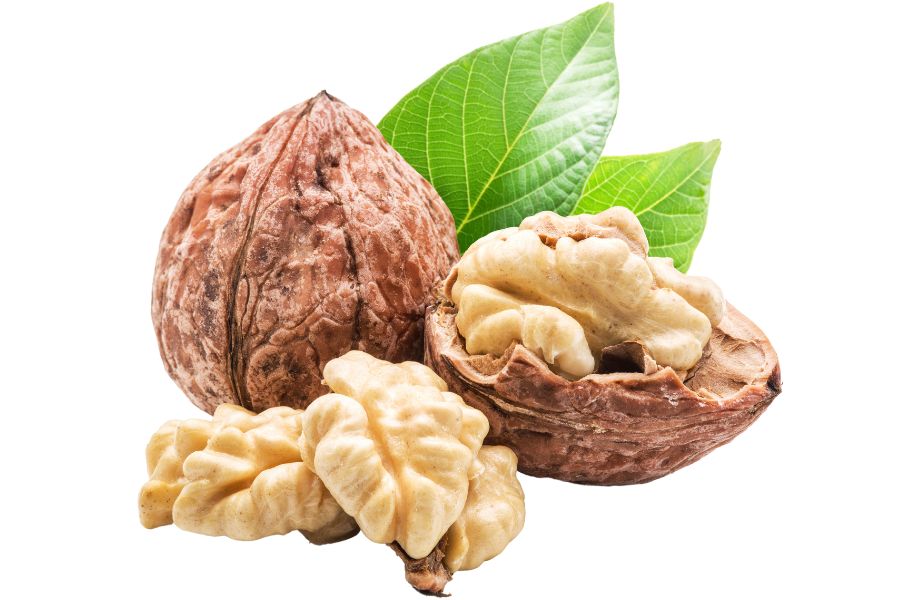Mississippi’s woods and fields are full of edible plants that most people walk right past. Chickweed and wood sorrel grow low to the ground and are easy to overlook, but both have fresh, edible leaves. The more you pay attention, the more you’ll notice how many wild plants here offer something you can actually eat.
Pecan trees are easy to spot when you know their shape, and their nuts are worth the trouble to gather. Passionflower vines weave through the underbrush and produce fruit that’s edible when ripe. You don’t need to travel far to come across something that could end up on your plate.
There are dozens more species like these across the state. Knowing what to look for can make it easy to walk away with a wide mix of edible plants you’d never find in a store. It doesn’t take long before the land starts to look very different.
What We Cover In This Article:
- The Edible Plants Found in the State
- Toxic Plants That Look Like Edible Plants
- How to Get the Best Results Foraging
- Where to Find Forageables in the State
- Peak Foraging Seasons
- The extensive local experience and understanding of our team
- Input from multiple local foragers and foraging groups
- The accessibility of the various locations
- Safety and potential hazards when collecting
- Private and public locations
- A desire to include locations for both experienced foragers and those who are just starting out
Using these weights we think we’ve put together the best list out there for just about any forager to be successful!
A Quick Reminder
Before we get into the specifics about where and how to find these plants and mushrooms, we want to be clear that before ingesting any wild plant or mushroom, it should be identified with 100% certainty as edible by someone qualified and experienced in mushroom and plant identification, such as a professional mycologist or an expert forager. Misidentification can lead to serious illness or death.
All plants and mushrooms have the potential to cause severe adverse reactions in certain individuals, even death. If you are consuming wild foragables, it is crucial to cook them thoroughly and properly and only eat a small portion to test for personal tolerance. Some people may have allergies or sensitivities to specific mushrooms and plants, even if they are considered safe for others.
The information provided in this article is for general informational and educational purposes only. Foraging involves inherent risks.
The Edible Plants Found in the State
Wild plants found across the state can add fresh, seasonal ingredients to your meals:
Blackberry (Rubus allegheniensis)
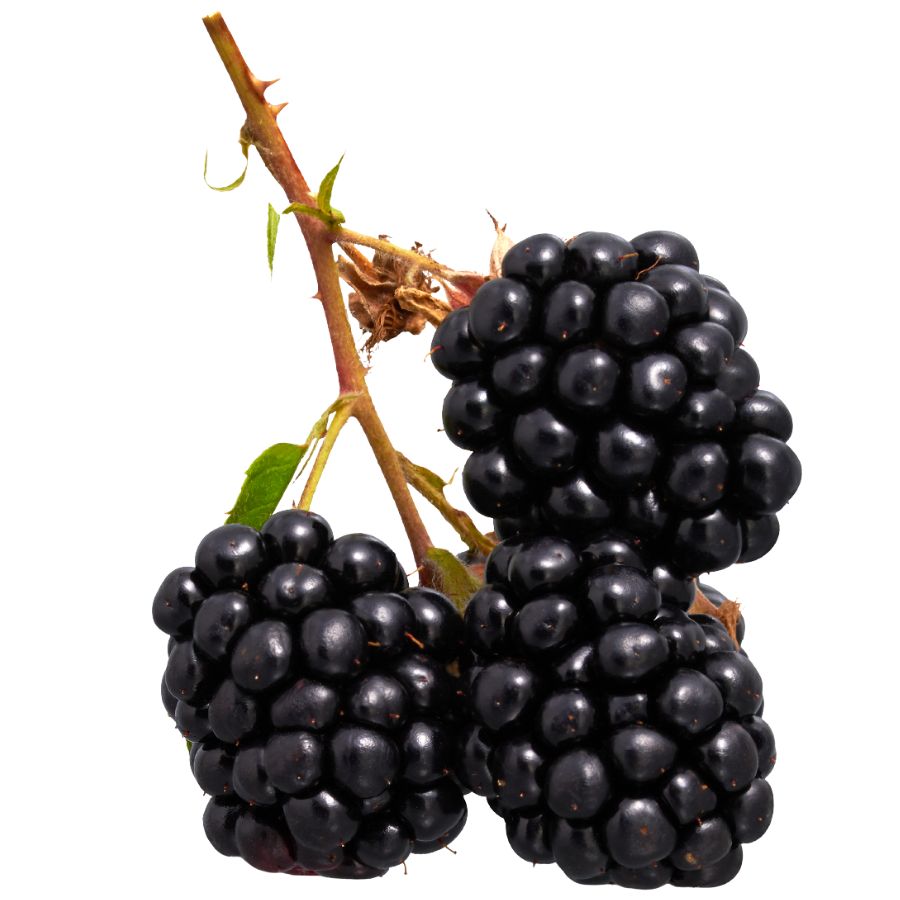
Blackberry, also known as brambleberry or dewberry, grows on thick, thorny canes that can arch and spread across the ground. The leaves are usually serrated, and the fruit ripens from green to red before turning deep purple or black when fully ready to pick.
The berries have a sweet, tangy flavor with a soft, juicy texture that easily bursts in your mouth. You can eat them raw, bake them into pies and cobblers, or preserve them by making jams and jellies.
Only the ripe fruit of the blackberry plant is edible, while the stems and leaves are not usually eaten.
Some plants like black raspberry can look similar, but black raspberries are hollow in the center when picked while blackberries have a solid core. It’s important to avoid confusing blackberries with nightshade berries, which grow on upright plants without thorny vines and can be toxic.
An interesting thing about blackberries is that they are technically not a single berry but a cluster of small drupelets packed together.
Elderberry (Sambucus nigra subsp. canadensis)
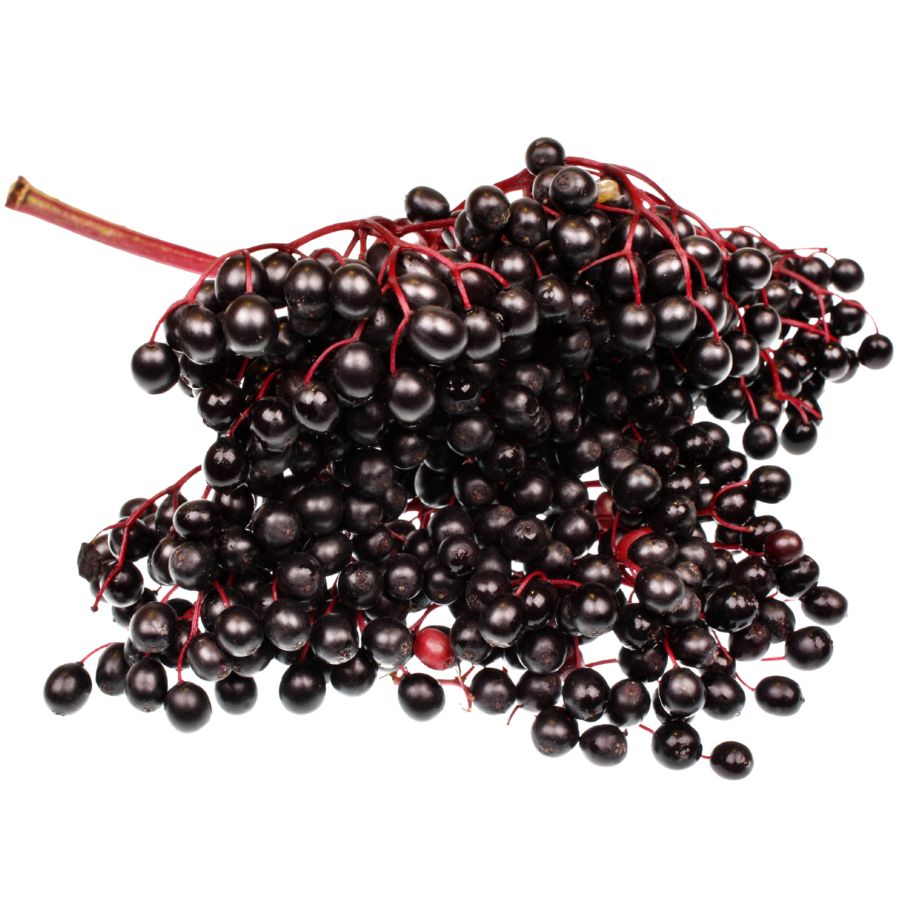
Elderberry is often called American elder, common elder, or sweet elder. It grows as a large, shrubby plant with clusters of tiny white flowers that eventually turn into deep purple to black berries.
You can recognize elderberry by its compound leaves with five to eleven serrated leaflets and its flat-topped flower clusters. One important thing to watch out for is its toxic lookalikes, like pokeweed, which has very different smooth-edged leaves and reddish stems.
The ripe berries have a tart, almost earthy flavor and a soft texture when cooked. People usually cook elderberries into syrups, jams, pies, or wine because eating raw berries can cause nausea.
Only the ripe, cooked berries and flowers are edible, while the leaves, stems, and unripe berries are toxic. Always take care to strip the berries cleanly from their stems before using them, as even small bits of stem can cause problems.
American Persimmon (Diospyros virginiana)
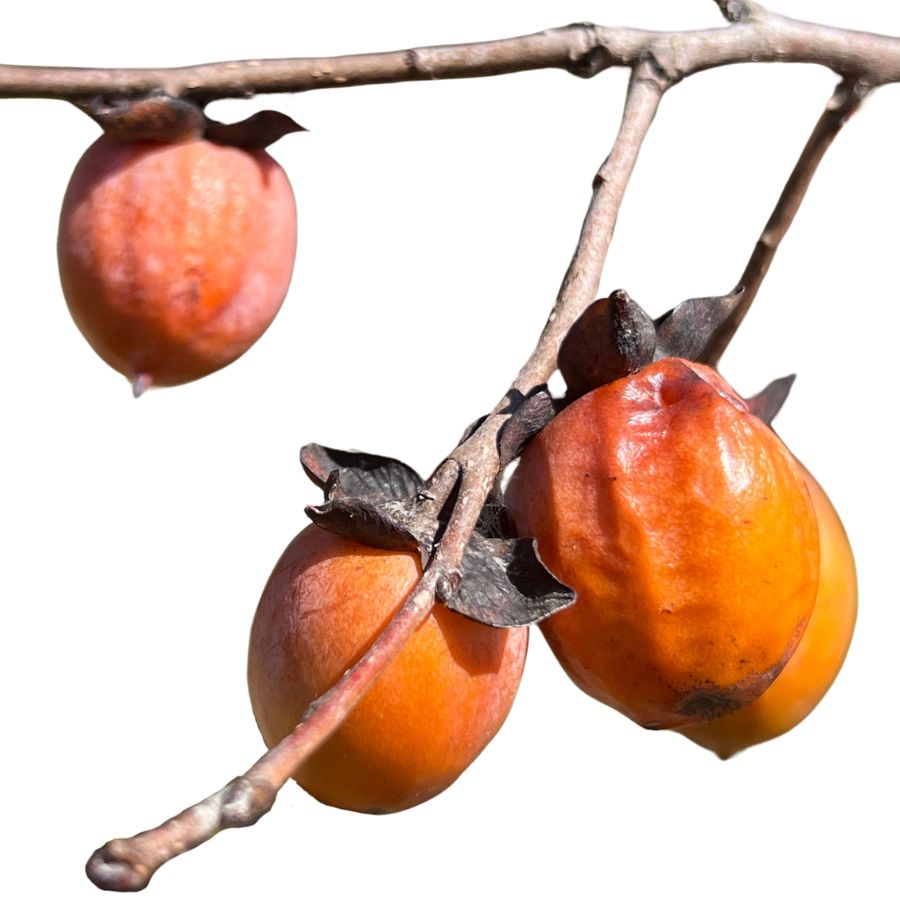
Persimmon, sometimes called American persimmon or common persimmon, grows as a small tree with rough, blocky bark and oval-shaped leaves. The fruit looks like a small, flattened tomato and turns a deep orange or reddish color when ripe.
If you bite into an unripe persimmon, you will quickly notice an extremely astringent, mouth-drying effect. A ripe persimmon, on the other hand, tastes sweet, rich, and custard-like, with a soft and jelly-like texture inside.
You can eat persimmons fresh once they are fully ripe, or you can cook them down into puddings, jams, and baked goods. Some people also mash and freeze the pulp to use later for pies, breads, and sauces.
Wild persimmons can sometimes be confused with black nightshade berries, but nightshade fruits are much smaller, grow in clusters, and stay dark purple or black. Only the ripe fruit of the persimmon tree should be eaten; the seeds and the unripe fruit are not edible.
Muscadine (Vitis rotundifolia)
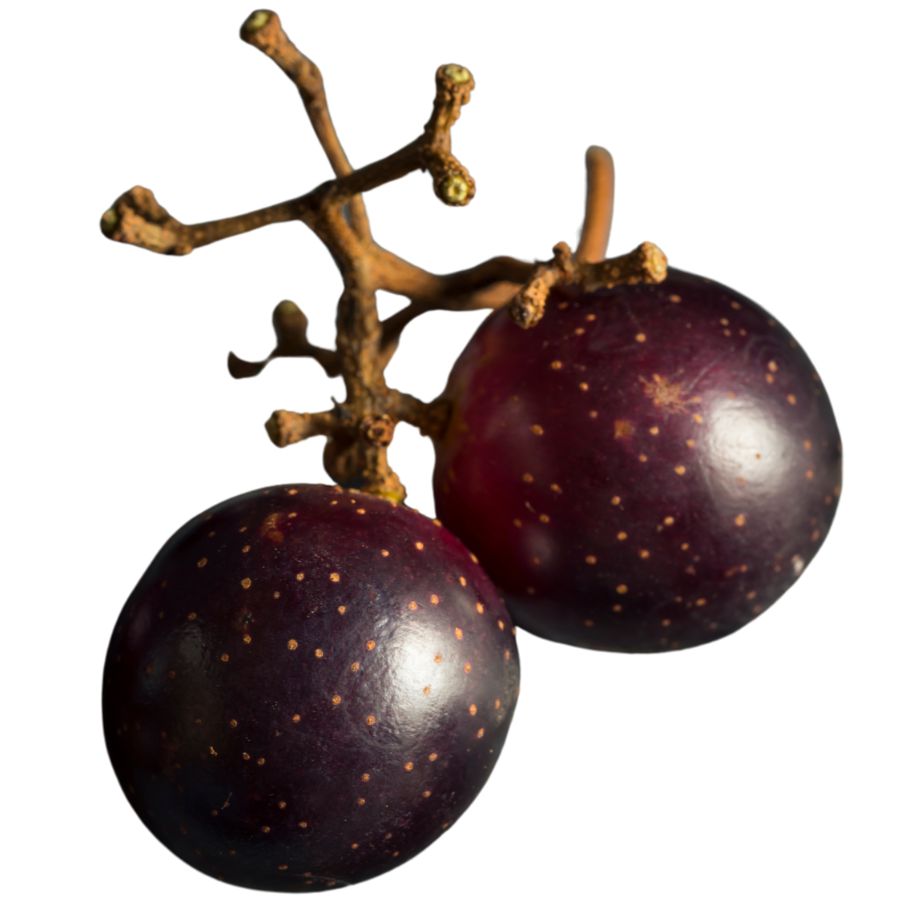
Muscadine grows on robust woody vines and produces thick-skinned grapes that vary in color from green-bronze to deep purple. The leaves are rounded with jagged edges, and the fruit typically grows alone or in small clusters.
You can eat them fresh, but they’re also commonly boiled for jelly, baked into pies, or processed into juice. The taste is bold, with a rich sweetness and earthy undertone.
A toxic plant called Canadian moonseed is the most dangerous lookalike; its fruit lacks muscadine’s gritty seeds and has smoother skin. You can also tell the difference by the leaves. Moonseed leaves are broader and more uniformly shaped.
Only the ripe fruit is edible; avoid eating stems or leaves. Muscadine juice contains natural pectin, which is why it sets so well when turned into jam.
Passionflower (Passiflora incarnata)
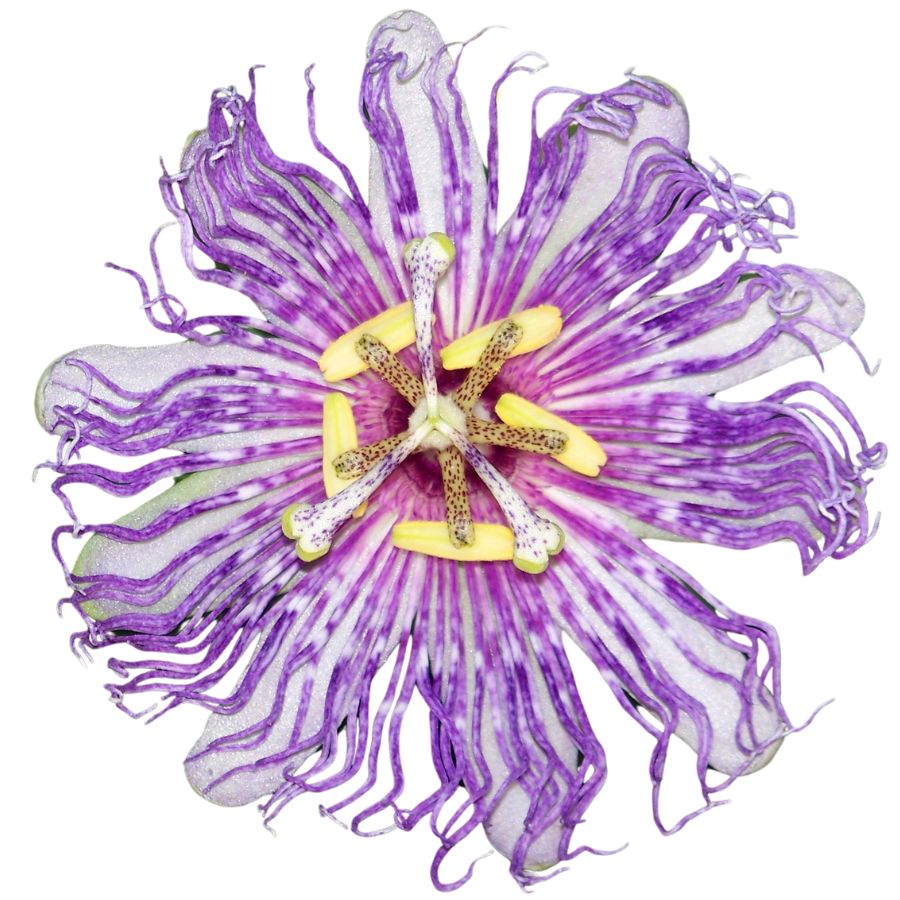
With its intricate purple blooms and oval green fruits, passionflower grows on a vigorous vine and produces a soft, jelly-like pulp that’s edible when ripe. The taste is tart and sweet, with a strong tropical note that pairs well with sugar.
You can spoon the pulp straight from the rind, or boil it into preserves or syrups. Don’t eat the unripe fruit—it can cause nausea or cramping.
Passionflower vines can resemble wild cucumber or other vining species, but only passionflower produces that signature flower and edible fruit. Its fruit is filled with dozens of seeds, each wrapped in translucent orange pulp.
The rind isn’t eaten, and the rest of the plant isn’t used in cooking. When foraging, make sure the fruit has wrinkled slightly—that’s when the flavor and texture are at their best.
Zarzaparrilla (Smilax bona-nox)

If you’ve ever brushed past zarzaparrilla, you’ve probably noticed its hooked thorns and glossy, heart-shaped leaves. The young shoots and tender tips are edible and have a crisp texture with a mild, slightly earthy flavor.
You can boil the shoots or toss them into stews where they soften quickly and take on surrounding flavors. Avoid mistaking it for catbrier species with duller, more fibrous stems—zarzaparrilla has a smoother, more palatable growth when young.
The roots are sometimes chewed raw, though they’re fibrous and taste more bitter than the shoots. Leaves are technically edible but tough and better left alone unless very young.
Look out for the woody vine’s tendrils and its characteristic green stems lined with small prickles. Don’t try to eat the mature parts—older vines become too tough to chew and are no longer suitable for cooking.
Lamb’s Quarters (Chenopodium album)
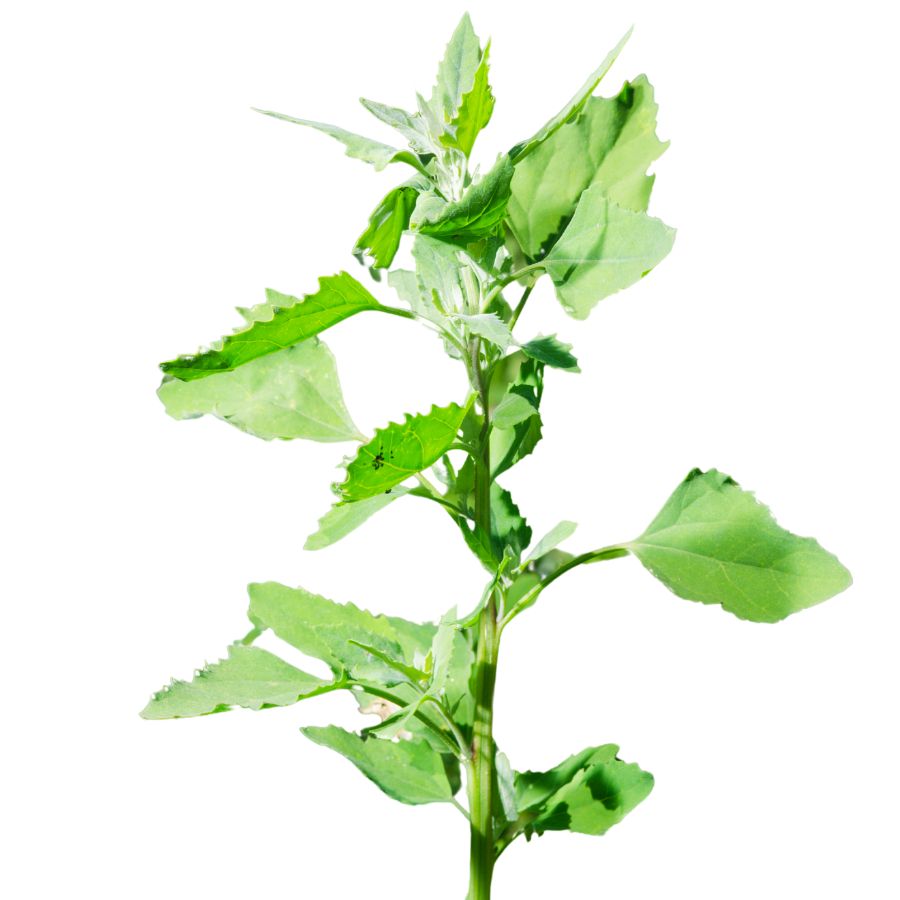
Lamb’s quarters, also called wild spinach and pigweed, has soft green leaves that often look dusted with a white, powdery coating. The leaves are shaped a little like goose feet, with slightly jagged edges and a smooth underside that feels almost velvety when you touch it.
A few plants can be confused with lamb’s quarters, like some types of nightshade, but true lamb’s quarters never have berries and its leaves are usually coated in that distinctive white bloom. Always check that the stems are grooved and not round and smooth like the poisonous lookalikes.
When you taste lamb’s quarters, you will notice it has a mild, slightly nutty flavor that gets richer when cooked. The young leaves, tender stems, and even the seeds are all edible, but you should avoid eating the older stems because they become tough and stringy.
People often sauté lamb’s quarters like spinach, blend it into smoothies, or dry the leaves for later use in soups and stews. It is also rich in oxalates, so you will want to cook it before eating large amounts to avoid any problems.
Groundnut (Apios americana)

Groundnut is also called potato bean or Indian potato, and it grows as a climbing vine with clusters of pinkish-purple flowers. The part most people go for is the underground tuber, which looks a bit like a small, knobby chain of beads.
The flavor is richer than a regular potato, with a nutty, earthy taste and a dense, almost chestnut-like texture when cooked. It holds up well in soups and stews, or you can boil and mash it like a root vegetable.
Some people slice it thin and roast it until crisp, while others slow-cook it to bring out a sweeter taste. The vine also produces beans, but the root is what’s usually eaten.
There are a few vines that resemble groundnut, but many of those don’t have the same distinctive flower clusters or tend to lack the beadlike roots. Always make sure you’re digging up the right plant before cooking it.
Jerusalem Artichoke (Helianthus tuberosus)
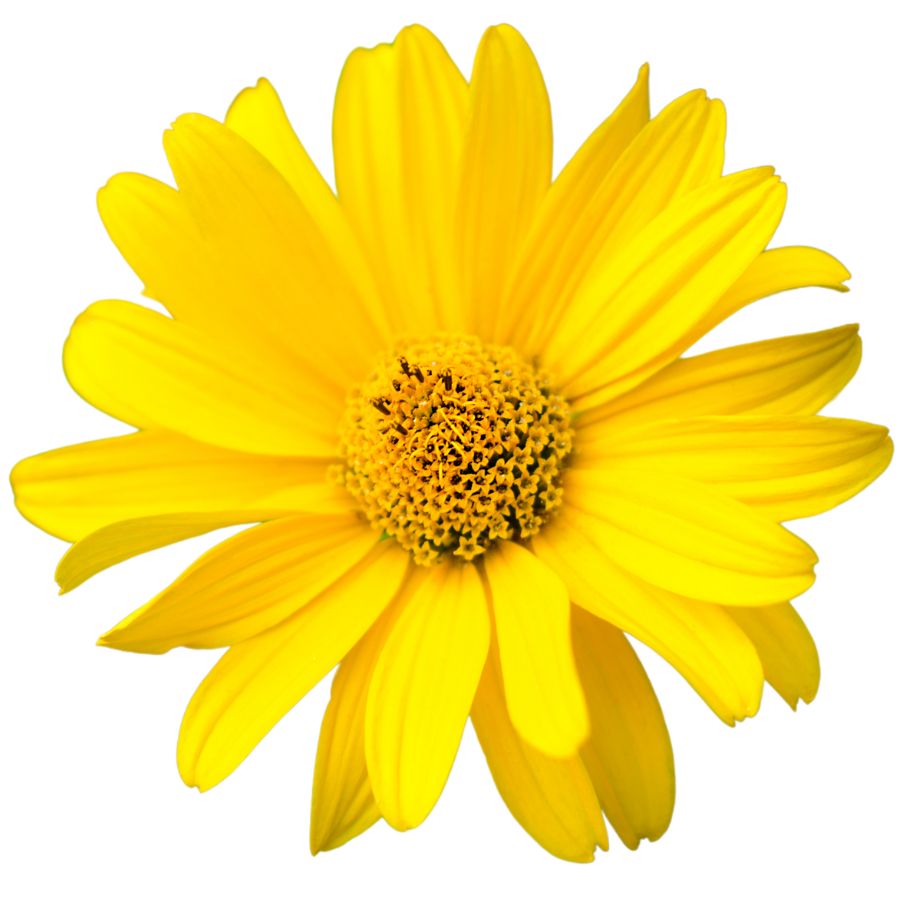
Jerusalem artichoke grows tall with sunflower-like blooms and has knobby underground tubers. The tubers are tan or reddish and look a bit like ginger root, though they belong to the sunflower family.
The part you’re after is the tuber, which has a nutty, slightly sweet flavor and a crisp texture when raw. You can roast, sauté, boil, or mash them like potatoes, and they hold their shape well in soups and stir-fries.
Some people experience gas or bloating after eating sunchokes due to the inulin they contain, so it’s a good idea to try a small amount first. Cooking them thoroughly can help reduce the chances of digestive discomfort.
Sunchokes don’t have many dangerous lookalikes, but it’s important not to confuse the plant with other sunflower relatives that don’t produce tubers. The above-ground part resembles a small sunflower, but it’s the knotted, underground tubers that are worth digging up.
Chickweed (Stellaria media)
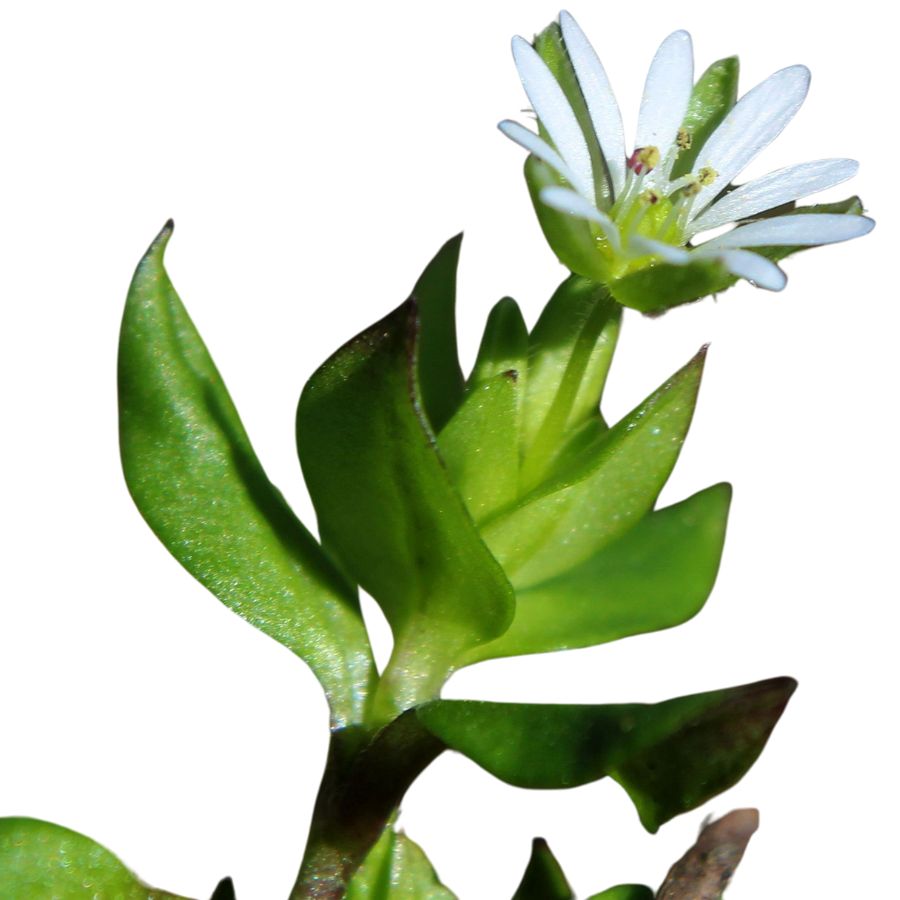
Chickweed, sometimes called satin flower or starweed, is a small, low-growing plant with delicate white star-shaped flowers and bright green leaves. The leaves are oval, pointed at the tip, and often grow in pairs along a slender, somewhat weak-looking stem.
When gathering chickweed, watch out for lookalikes like scarlet pimpernel, which has similar leaves but orange flowers instead of white. A key detail to check is the fine line of hairs that runs along one side of chickweed’s stem, a feature the dangerous lookalikes do not have.
The young leaves, tender stems, and flowers of chickweed are all edible, offering a mild, slightly grassy flavor with a crisp texture. You can toss it fresh into salads, blend it into pestos, or lightly wilt it into soups and stir-fries for a fresh green boost.
Aside from being a food plant, chickweed has been used traditionally in poultices and salves to help soothe skin irritations. Always make sure the plant is positively identified before eating, since mistaking it for a toxic lookalike could cause serious issues.
Wood Sorrel (Oxalis stricta)
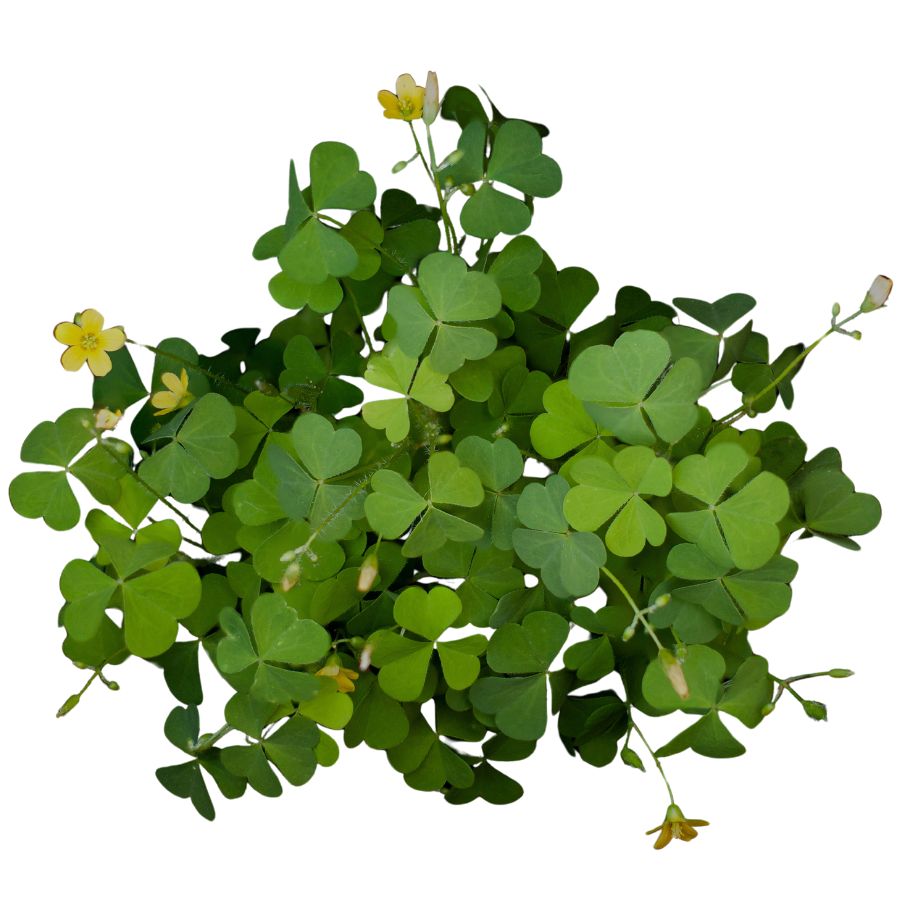
Wood sorrel has clover-like leaves and small yellow flowers. Each leaflet is heart-shaped, and the plant often folds up when touched or in low light.
The leaves, flowers, and seed pods are all safe to eat and have a tart, lemony flavor thanks to the oxalic acid they contain. You can toss them into salads, use them as a garnish, or nibble on them raw for a refreshing sour bite.
Be careful not to confuse it with clover, which has rounder leaves and lacks the same sharp tang when tasted. Large amounts of wood sorrel aren’t recommended if you have kidney issues, since oxalic acid can be hard on the kidneys over time.
The texture of the leaves is soft and delicate, making them a nice contrast in dishes with heavier greens. Even the seed pods have a bit of crunch and a pleasant tang if you catch them before they dry out.
Daylily (Hemerocallis fulva)
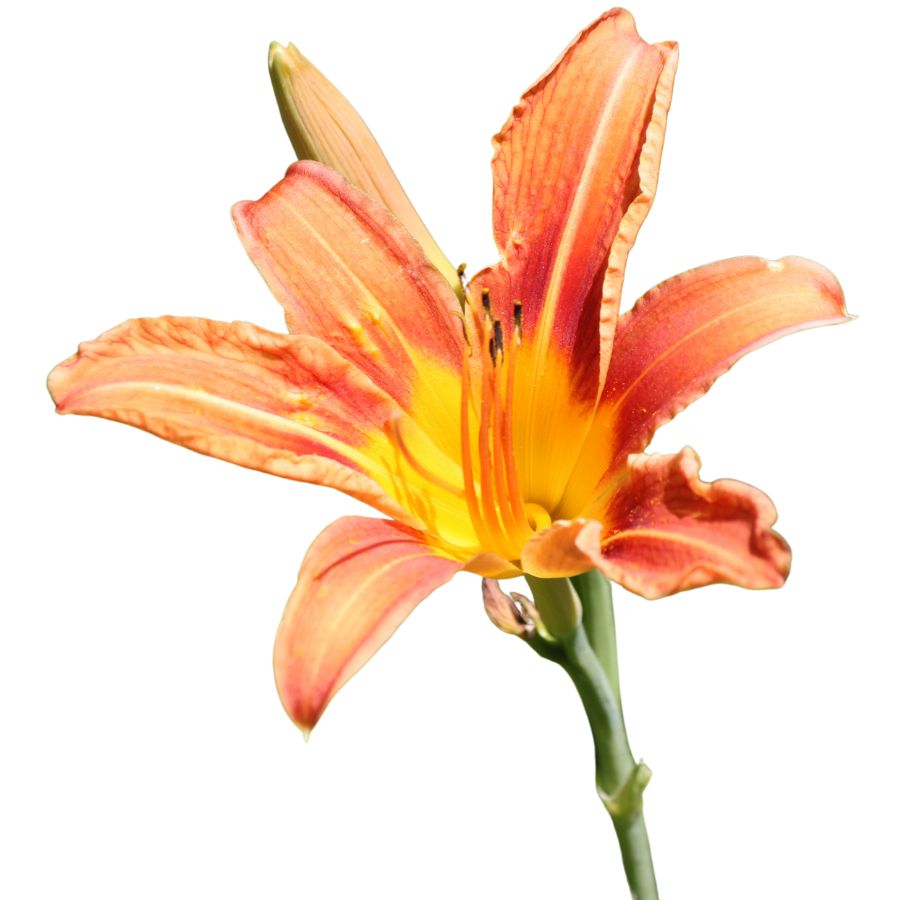
Bright orange flowers known as daylily, tiger lily, or ditch lily can sometimes be mistaken for other plants that are not safe to eat. True daylilies have long, blade-like leaves that grow in clumps at the base and a hollow flower stem, while their toxic lookalikes often have solid stems or different leaf patterns.
When it comes to flavor, daylily buds have a crisp texture and a mild taste that some people compare to green beans or asparagus. The flowers are tender and slightly sweet, which makes them popular for tossing into salads or lightly stir-frying.
Most people use the unopened flower buds in cooking, but the young shoots and tuber-like roots are also gathered for food. Always make sure you are harvesting from clean areas, because roadside plants can carry pollutants that are not safe to eat.
A few important cautions come with daylilies, since some people experience digestive upset after eating large amounts. Start by tasting a small quantity first to see how your body reacts before eating more.
Dandelion (Taraxacum officinale)
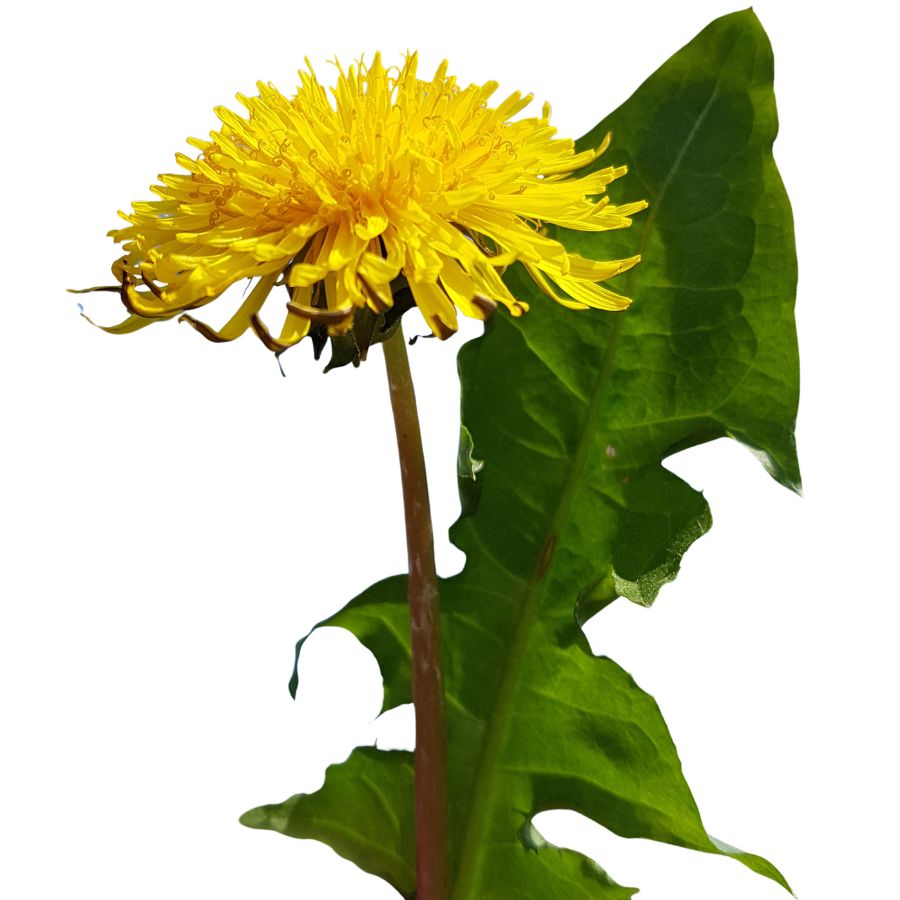
Bright yellow flowers and jagged, deeply toothed leaves make dandelions easy to spot in open fields, lawns, and roadsides. You might also hear them called lion’s tooth, blowball, or puffball once the flowers turn into round, white seed heads.
Every part of the dandelion is edible, but you will want to avoid harvesting from places treated with pesticides or roadside areas with heavy car traffic. Besides being a food source, dandelions have been used traditionally for simple herbal remedies and natural dye projects.
Young dandelion leaves have a slightly bitter, peppery flavor that works well in salads or sautés, and the flowers can be fried into fritters or brewed into tea. Some people even roast the roots to make a coffee substitute with a rich, earthy taste.
One thing to watch out for is cat’s ear, a common lookalike with hairy leaves and branching flower stems instead of a single, hollow one. To make sure you have a true dandelion, check for a smooth, hairless stem that oozes a milky sap when broken.
Plantain (Plantago major)
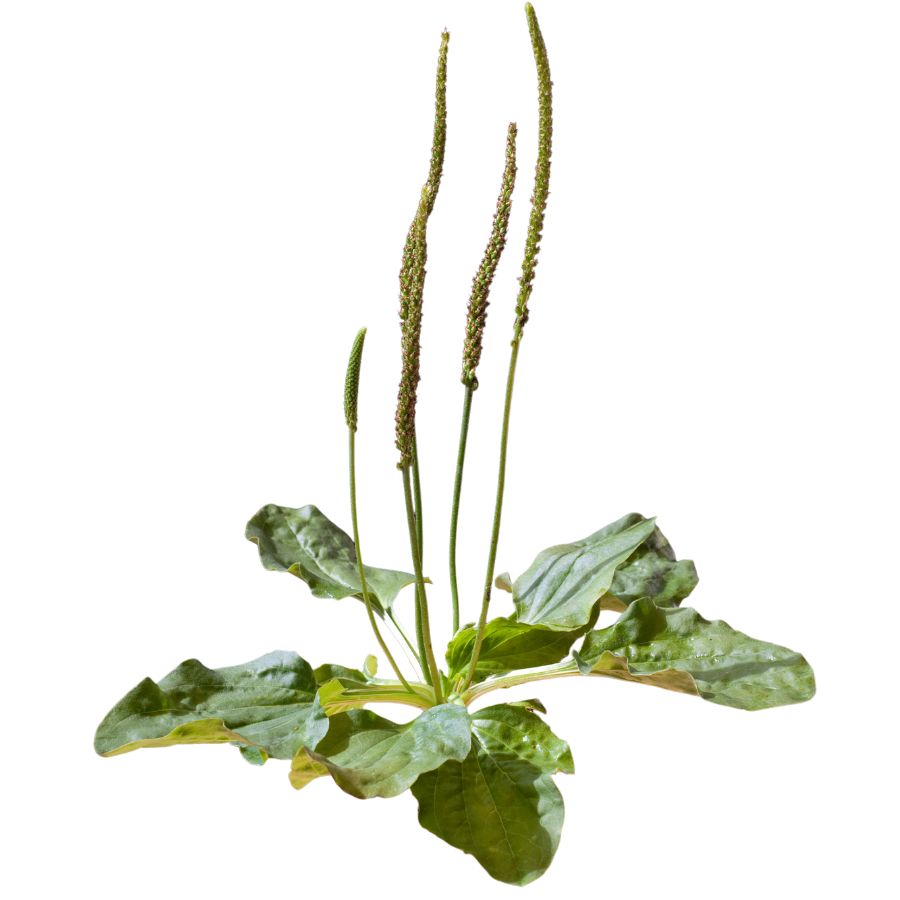
Plantain, also called common plantain or narrowleaf plantain depending on the type, is a low-growing plant with broad or lance-shaped leaves and tall, slender flower spikes. The leaves grow in a rosette close to the ground, and the thick veins running through them are one of the easiest ways to tell it apart from other plants.
You can mainly eat the young leaves and the seeds of the plants. Older leaves can become tough and stringy, so it is best to pick the smaller, tender ones when you want to eat them.
Plantain leaves have a slightly bitter, earthy taste and a chewy texture, especially when eaten raw. Many people like to add them to salads, soups, or stews, or lightly steam them to soften the flavor.
Always make sure you have a true plantain before eating because some similar-looking yard plants are not palatable and can upset your stomach. Look for the strong parallel veins and the tough, fibrous stems to help confirm your find.
Meadow Garlic (Allium canadense)
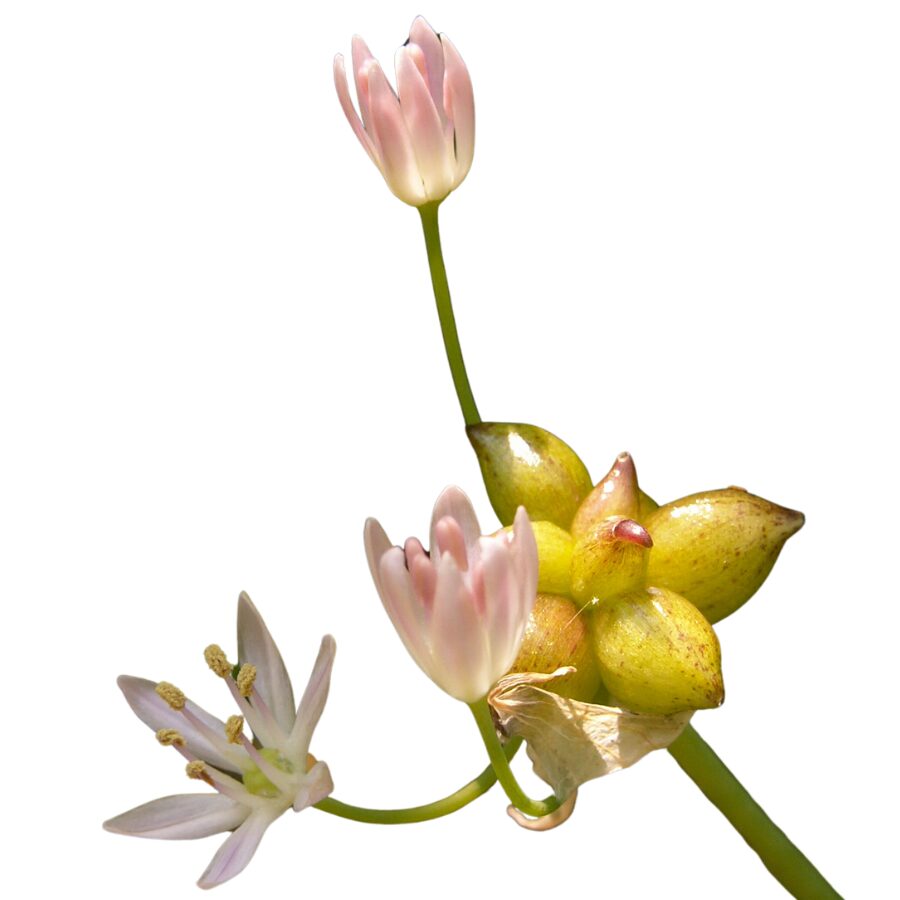
Meadow garlic, also called wild onion or wild garlic, grows in clumps with slender hollow leaves and small pink or white flowers. You’ll recognize it by the onion scent released when you bruise the stems or dig into the bulb.
The edible parts include the bulbs, stems, leaves, and flowers, all of which have a mild onion flavor and crisp texture. Cook them as you would scallions—sautéed, grilled, or tossed raw into salads.
False garlic, or crow poison, looks similar but lacks the onion smell and can be toxic if eaten. Always crush the plant before harvesting—no onion scent means don’t eat it.
Many people pickle the bulbs or chop the greens for compound butters and dips. Be cautious where you forage it though, as plants growing near roadsides or sprayed areas can absorb contaminants.
Black Walnut (Juglans nigra)
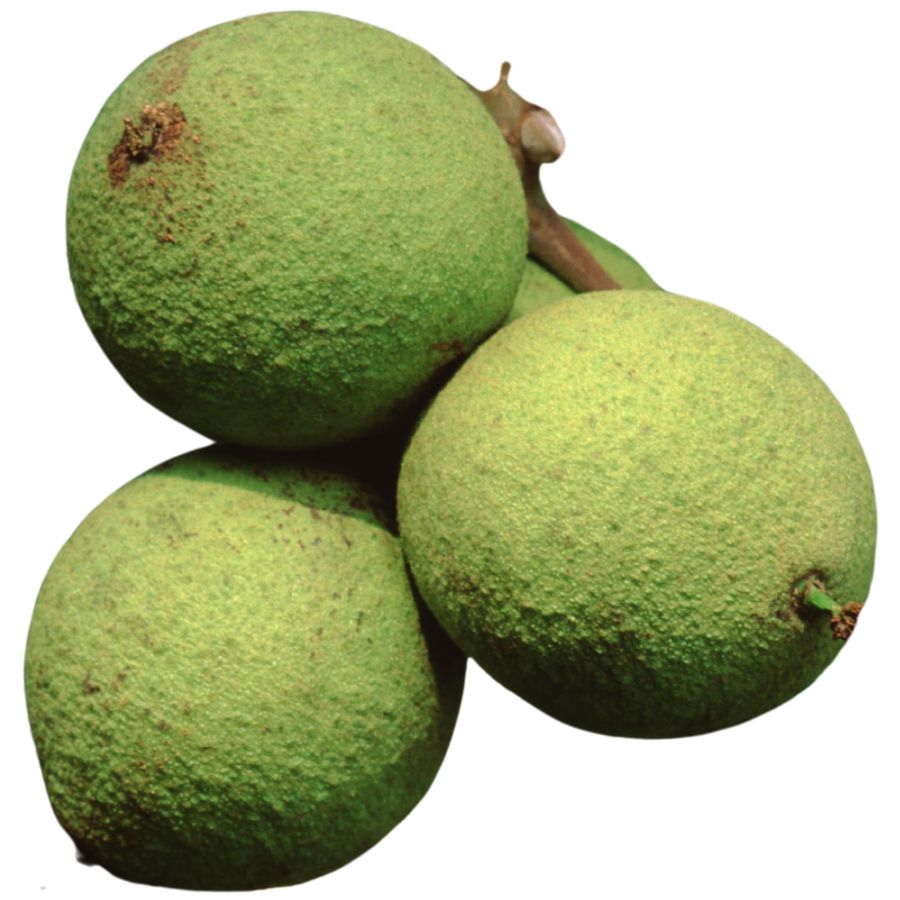
The nuts of the black walnut, sometimes called American walnut or eastern black walnut, have a tough outer husk and a deeply ridged shell inside. When you crack them open, you will find a rich, oily seed with an earthy, slightly bitter flavor that sets them apart from the sweeter English walnut.
It is easy to confuse black walnut with butternut, another tree with compound leaves and rough bark. If you check the nuts closely, black walnut fruits are round with a thick green husk, while butternuts are more oval and sticky.
When you get your hands on the nuts, the common ways to prepare them include baking them into cookies, sprinkling them over salads, or grinding them into a strong-tasting flour. The seeds themselves have a firm, almost chewy texture when raw and become crunchy after roasting.
Only the inner seed is eaten, while the outer husk and shell are discarded because they contain compounds that can irritate your skin. A fun fact about this plant is that even the roots and leaves produce a chemical called juglone, which can make it hard for other plants to grow nearby.
Pecan (Carya illinoinensis)
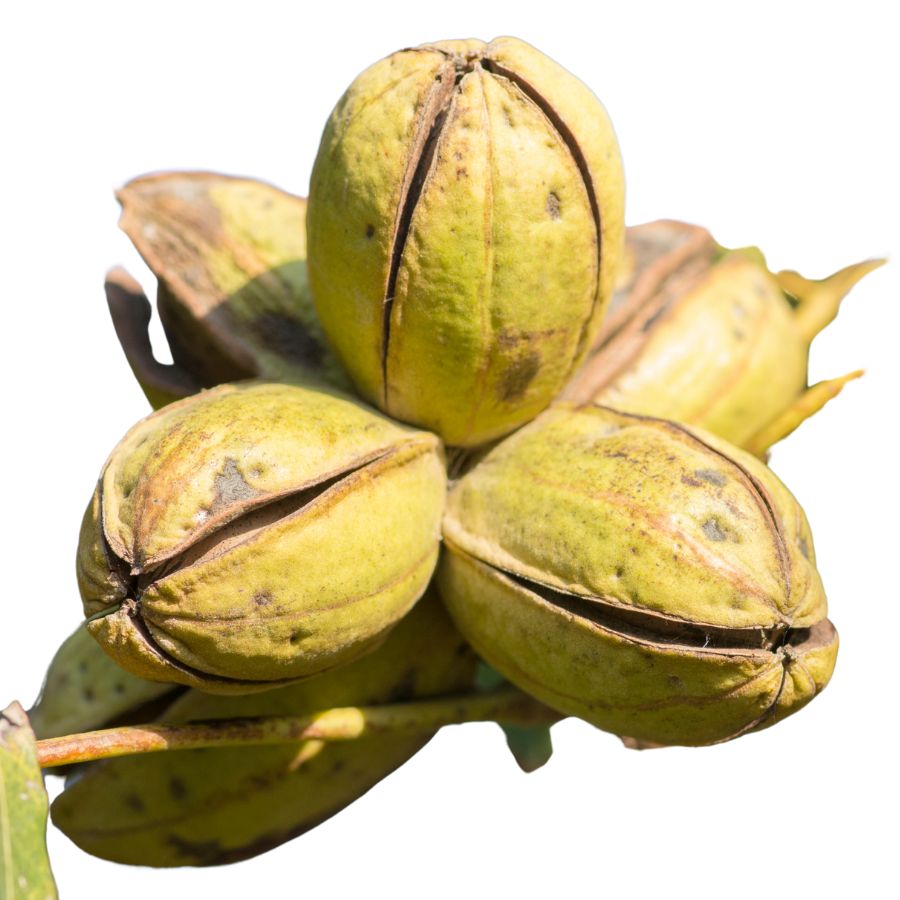
Pecan trees are sometimes called sweet pecans or just pecans, and they are easy to recognize once you know what to look for. They grow tall with long, feather-like leaves and produce a thick-shelled nut that splits open when ripe, revealing the edible part inside.
The nuts are hidden inside a smooth brown shell surrounded by a greenish husk. Some types of hickory nuts can look similar, but pecans are more elongated and have a thinner shell that cracks more easily.
Pecans have a rich, buttery flavor with a slightly sweet aftertaste, and their texture is firm yet tender when fresh. They are commonly roasted, baked into pies, or used raw in salads and desserts for added crunch and flavor.
Be careful not to eat the green outer husk or the hard shell, as only the nutmeat inside is edible. When gathering pecans, make sure they are fully ripened and free from mold or bitterness, which can ruin their flavor.
Pawpaw (Asimina triloba)
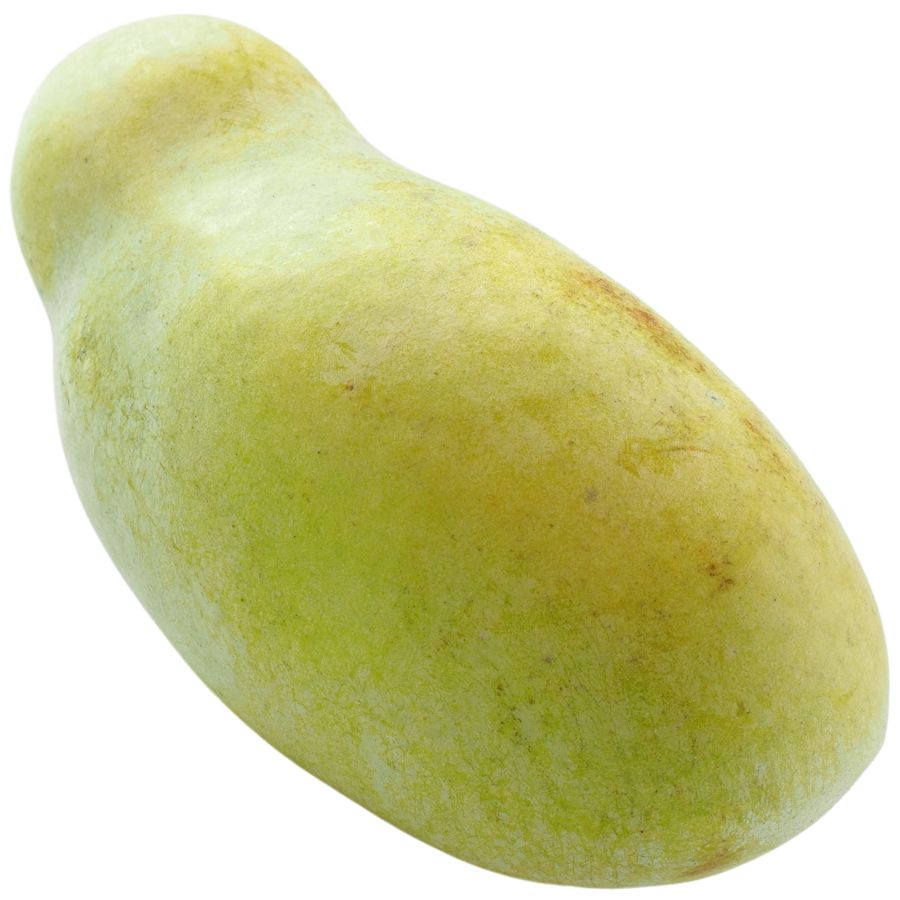
The pawpaw grows fruits that are green and shaped a little like small mangoes. Inside, the soft yellow flesh tastes like a blend of banana, mango, and melon, with a custard-like texture that melts in your mouth.
If you are comparing it to similar plants, keep in mind that young pawpaw trees can look a little like young magnolias because of their large leaves. True pawpaws grow fruits with large brown seeds tucked inside, while magnolias do not produce anything that looks or tastes similar.
You can eat the flesh straight out of the skin with a spoon, or mash it into puddings, smoothies, and even homemade ice cream. Some people also like to freeze it into cubes for later, although it does tend to brown quickly once exposed to air.
Stick to eating the soft inner flesh. Make sure not to ingest the skin and seeds of the fruit because they contain compounds that can upset your stomach.
This fruit is that it was a favorite snack of Native Americans and early explorers long before it started showing up in backyard gardens.
Eastern Prickly Pear Cactus (Opuntia humifusa)
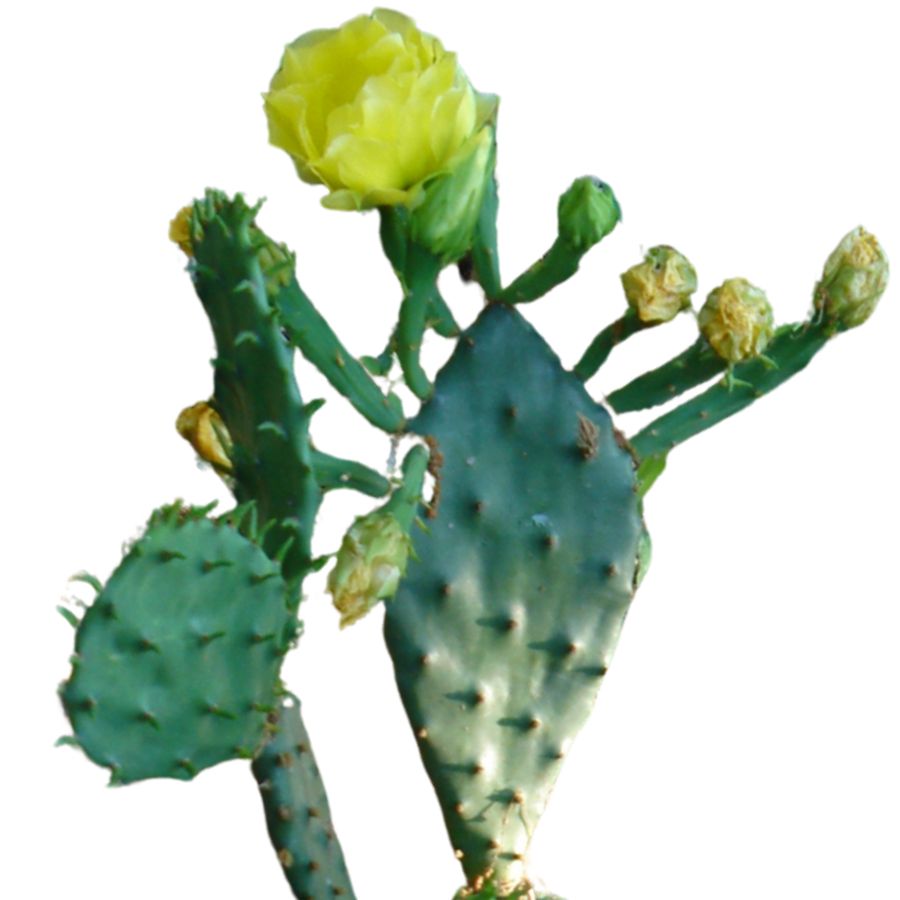
The pads of eastern prickly pear cactus are edible after proper preparation, with their slick interior becoming pleasantly tender once grilled or boiled. The fruits, often deep red when ripe, contain small seeds and a juicy pulp with a flavor that’s lightly sweet and subtly earthy.
Avoid confusing it with similar cactus species that have thicker pads and a bitter, soapy taste. Some southwestern species look similar at a glance but are far more fibrous and less palatable.
The best parts to eat are the young, tender pads and the ripe fruit, but every part must be carefully cleaned of spines and tiny glochids. Skip the roots and flowers, which aren’t used as food.
Many people slice and stir-fry the pads with eggs or tomatoes, or use the fruit to make candy or juice. If you’re trying it for the first time, cook a small batch and see how the texture works for you—it can be slightly mucilaginous, like okra.
American Beautyberry (Callicarpa americana)
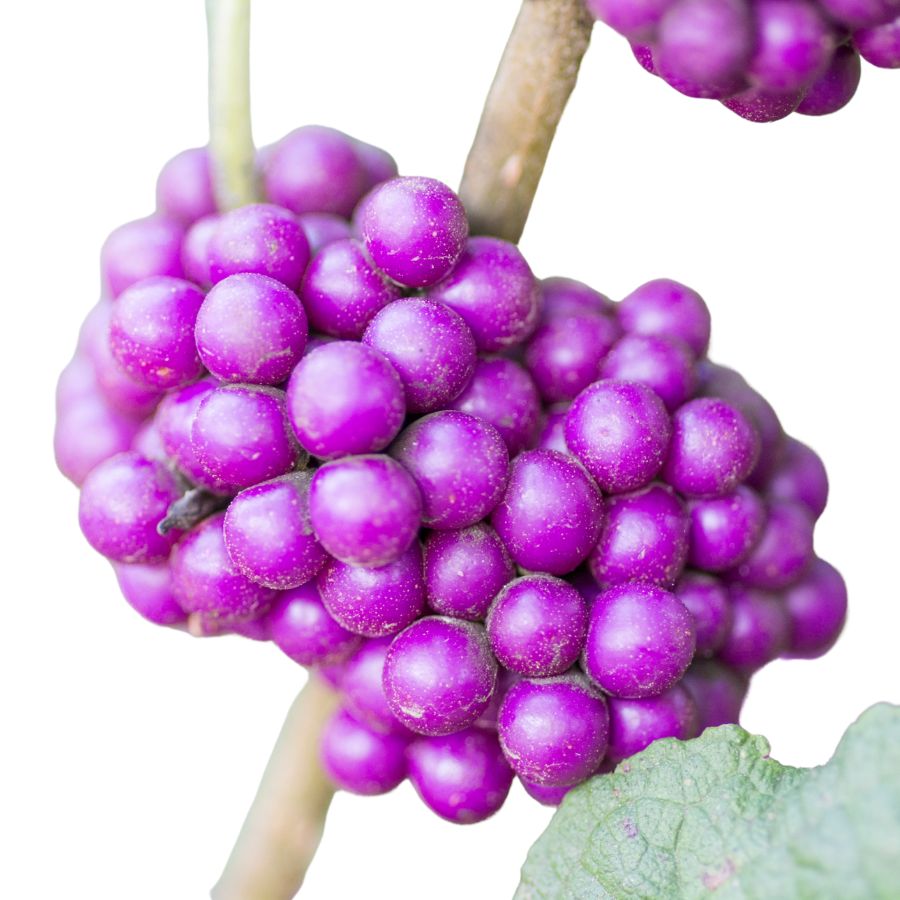
American beautyberry, sometimes called French mulberry or sourbush, is highly easily recognizable thanks to its bright clusters of purple berries wrapped tightly around its stems. The plant itself has arching branches and broad, serrated leaves that give off a slight spicy scent when crushed.
The berries are edible and have a mild, slightly sweet flavor with a soft, juicy texture that some people find a little gritty. Only the ripe purple berries should be eaten, as the leaves and unripe berries are not considered edible.
One of the easiest ways to enjoy beautyberries is by making jelly, where the fruit’s subtle taste really shines through. Some people also simmer the berries into syrups or add them to baked goods, although the flavor can be too delicate to stand out without a little help from sugar or lemon.
Beautyberries are sometimes confused with pokeweed, but pokeweed’s berries are a darker purple and grow on red stems in drooping clusters rather than tight whorls. Always double-check the plant’s structure and berry arrangement so you can be sure you are harvesting true American beautyberry.
Toxic Plants That Look Like Edible Plants
There are plenty of wild edibles to choose from, but some toxic native plants closely resemble them. Mistaking the wrong one can lead to severe illness or even death, so it’s important to know exactly what you’re picking.
Poison Hemlock (Conium maculatum)
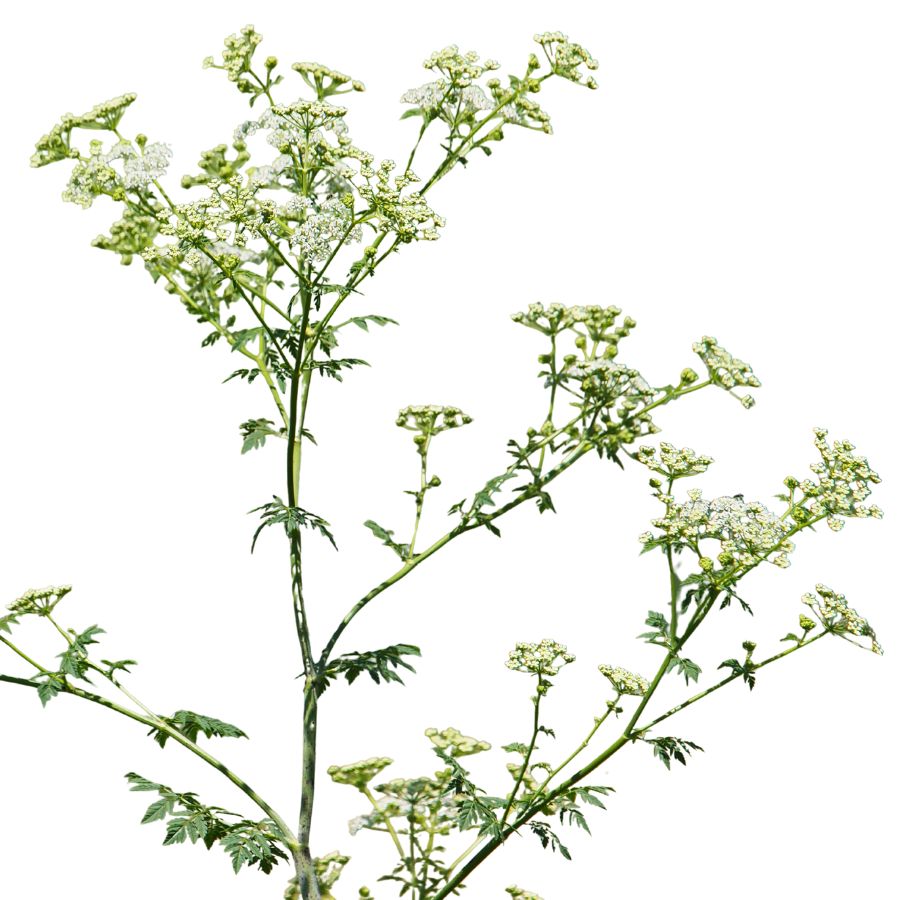
Often mistaken for: Wild carrot (Daucus carota)
Poison hemlock is a tall plant with lacy leaves and umbrella-like clusters of tiny white flowers. It has smooth, hollow stems with purple blotches and grows in sunny places like roadsides, meadows, and stream banks.
Unlike wild carrot, which has hairy stems and a dark central floret, poison hemlock has a musty odor and no flower center spot. It’s extremely toxic; just a small amount can be fatal, and even touching the sap can irritate the skin.
Water Hemlock (Cicuta spp.)
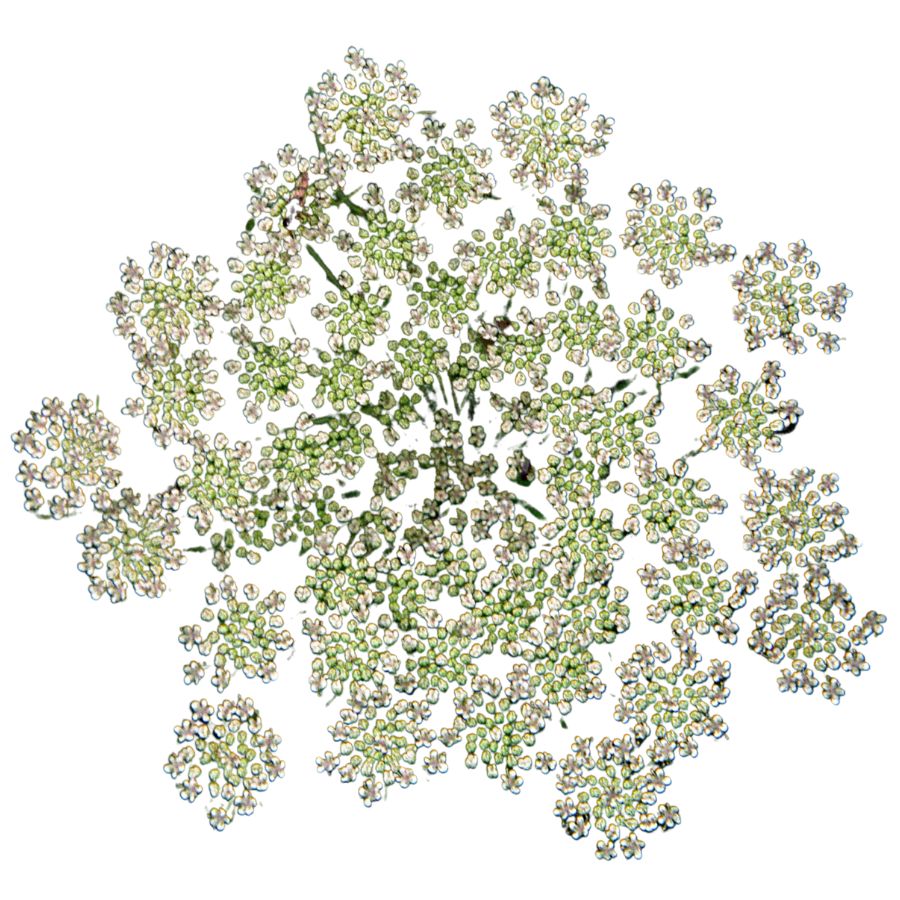
Often mistaken for: Wild parsnip (Pastinaca sativa) or wild celery (Apium spp.)
Water hemlock is a tall, branching plant with umbrella-shaped clusters of small white flowers. It grows in wet places like stream banks, marshes, and ditches, with stems that often show purple streaks or spots.
It can be confused with wild parsnip or wild celery, but its thick, hollow roots have internal chambers and release a yellow, foul-smelling sap when cut. Water hemlock is the most toxic plant in North America, and just a small amount can cause seizures, respiratory failure, and death.
False Hellebore (Veratrum viride)
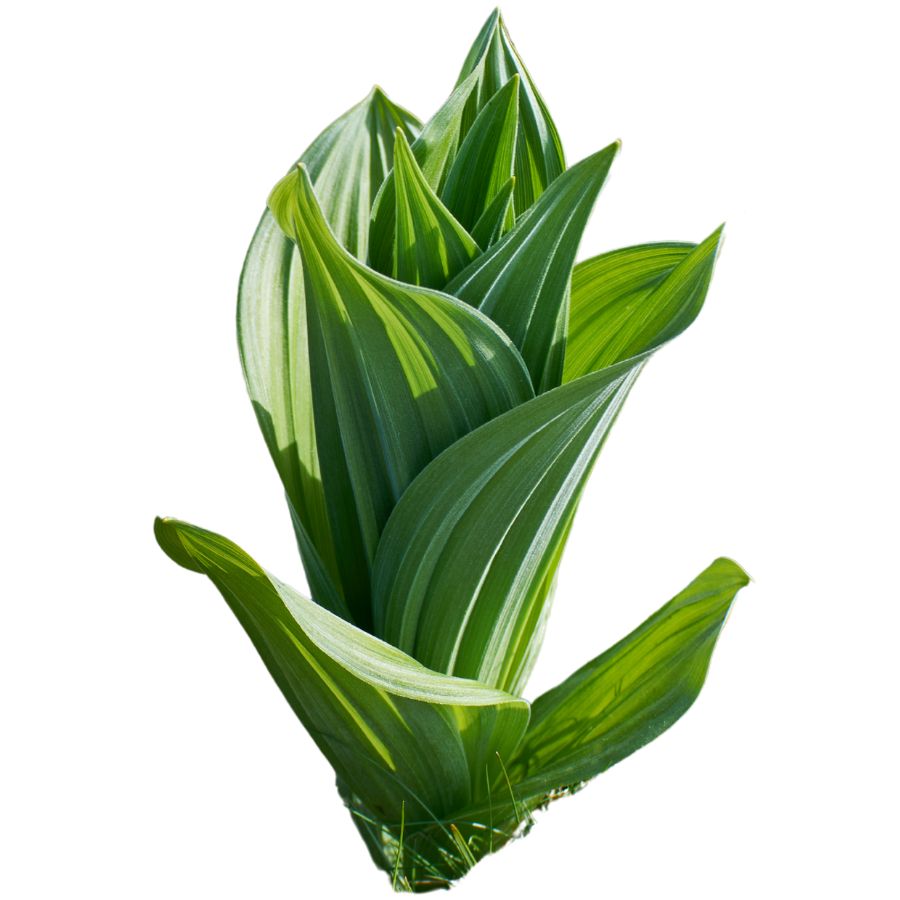
Often mistaken for: Ramps (Allium tricoccum)
False hellebore is a tall plant with broad, pleated green leaves that grow in a spiral from the base, often appearing early in spring. It grows in moist woods, meadows, and along streams.
It’s commonly mistaken for ramps, but ramps have a strong onion or garlic smell, while false hellebore is odorless and later grows a tall flower stalk. The plant is highly toxic, and eating any part can cause nausea, a slowed heart rate, and even death due to its alkaloids that affect the nervous and cardiovascular systems.
Death Camas (Zigadenus spp.)
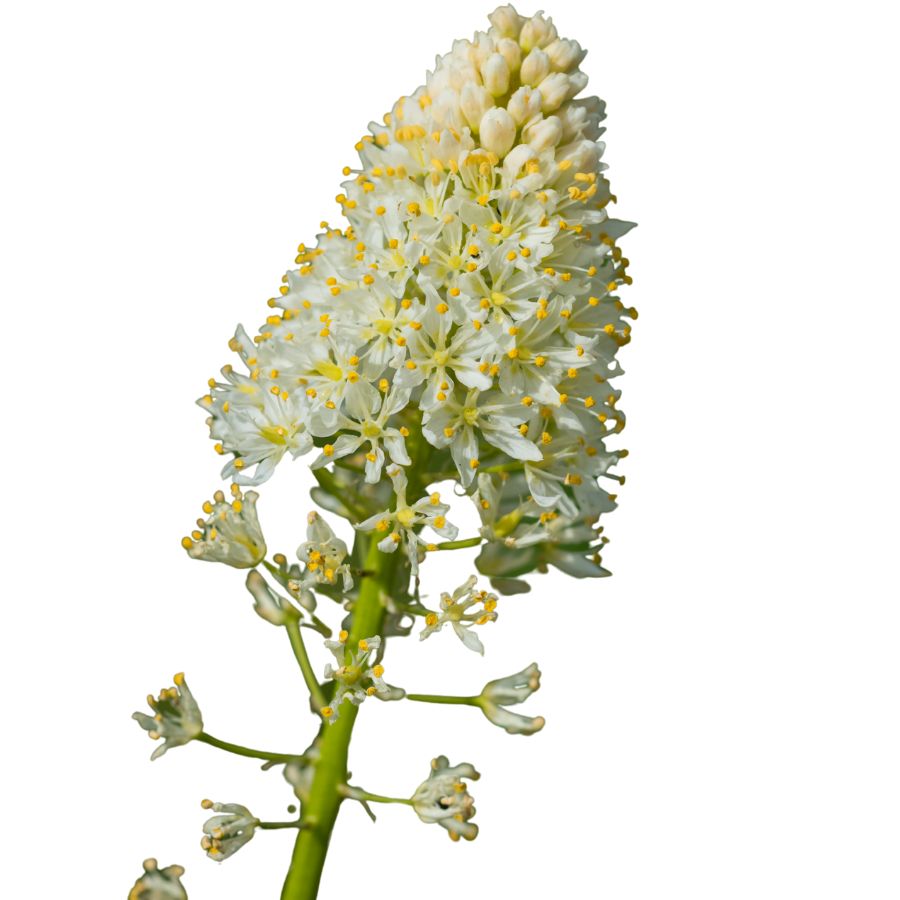
Often mistaken for: Wild onion or wild garlic (Allium spp.)
Death camas is a slender, grass-like plant that grows from underground bulbs and is found in open woods, meadows, and grassy hillsides. It has small, cream-colored flowers in loose clusters atop a tall stalk.
It’s often confused with wild onion or wild garlic due to their similar narrow leaves and habitats, but only Allium plants have a strong onion or garlic scent, while death camas has none. The plant is extremely poisonous, especially the bulbs, and even a small amount can cause nausea, vomiting, a slowed heartbeat, and potentially fatal respiratory failure.
Buckthorn Berries (Rhamnus spp.)
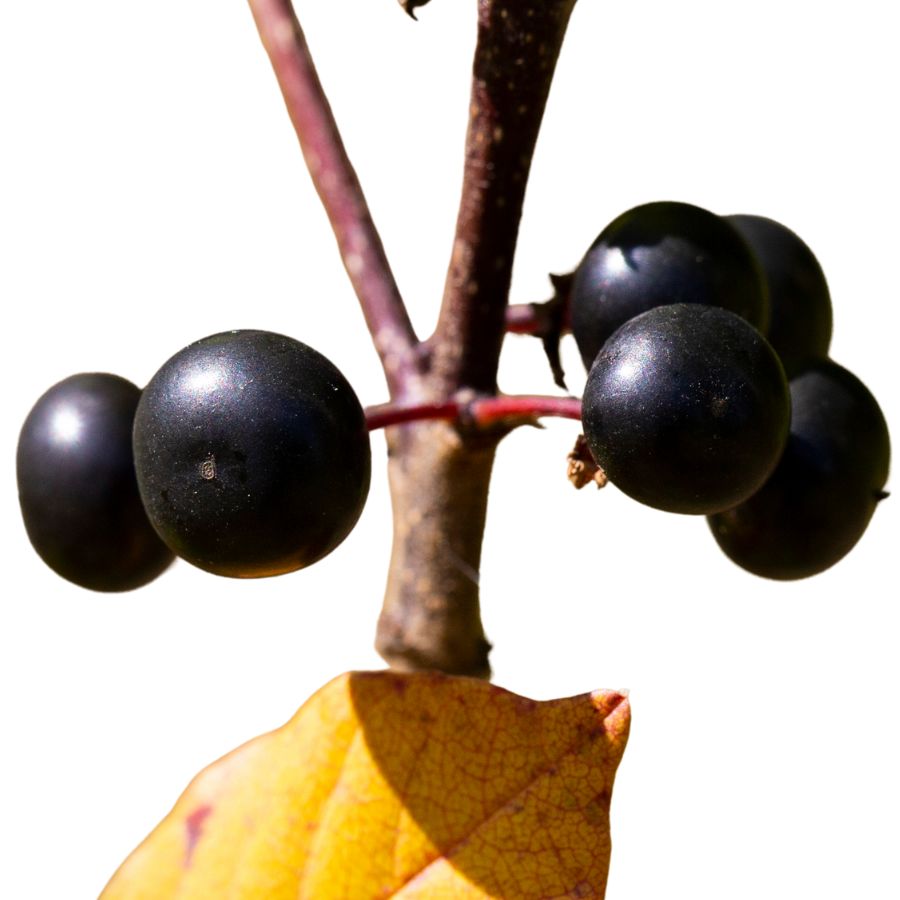
Often mistaken for: Elderberries (Sambucus spp.)
Buckthorn is a shrub or small tree often found along woodland edges, roadsides, and disturbed areas. It produces small, round berries that ripen to dark purple or black and usually grow in loose clusters.
These berries are sometimes mistaken for elderberries and other wild fruits, which also grow in dark clusters, but elderberries form flat-topped clusters on reddish stems while buckthorn berries are more scattered. Buckthorn berries are unsafe to eat as they contain compounds that can cause cramping, vomiting, and diarrhea, and large amounts may lead to dehydration and serious digestive problems.
Mayapple (Podophyllum peltatum)
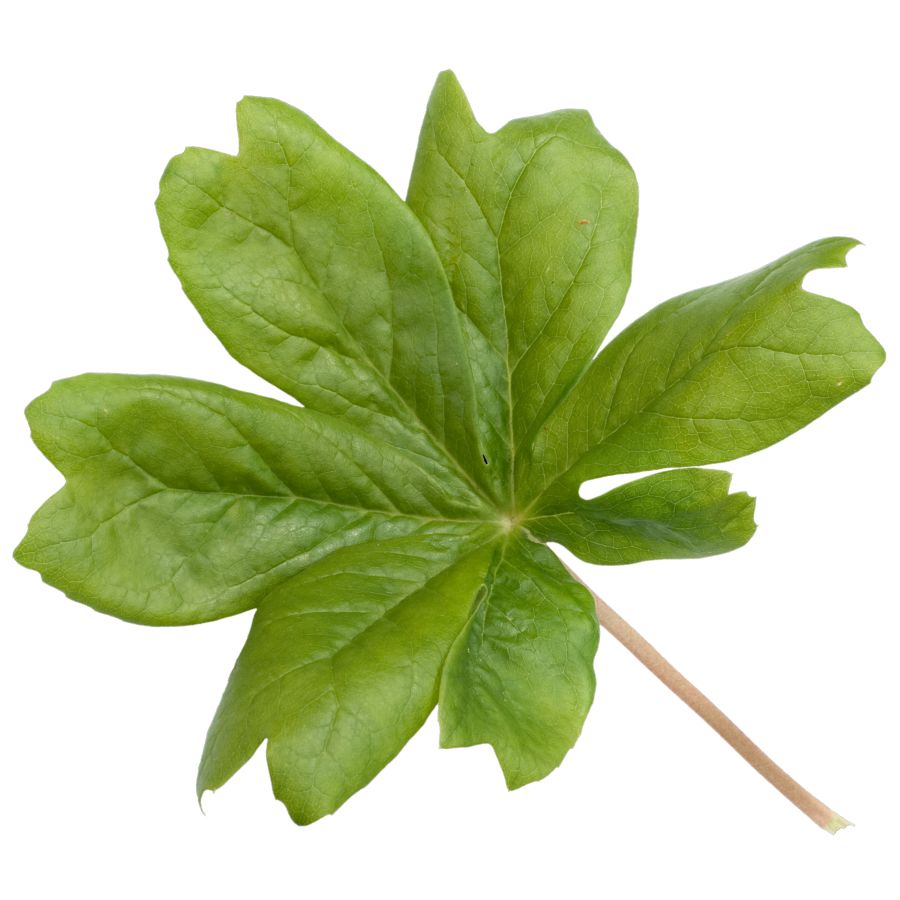
Often mistaken for: Wild grapes (Vitis spp.)
Mayapple is a low-growing plant found in shady forests and woodland clearings. It has large, umbrella-like leaves and produces a single pale fruit hidden beneath the foliage.
The unripe fruit resembles a small green grape, causing confusion with wild grapes, which grow in woody clusters on vines. All parts of the mayapple are toxic except the fully ripe, yellow fruit, which is only safe in small amounts. Eating unripe fruit or other parts can lead to nausea, vomiting, and severe dehydration.
Virginia Creeper (Parthenocissus quinquefolia)
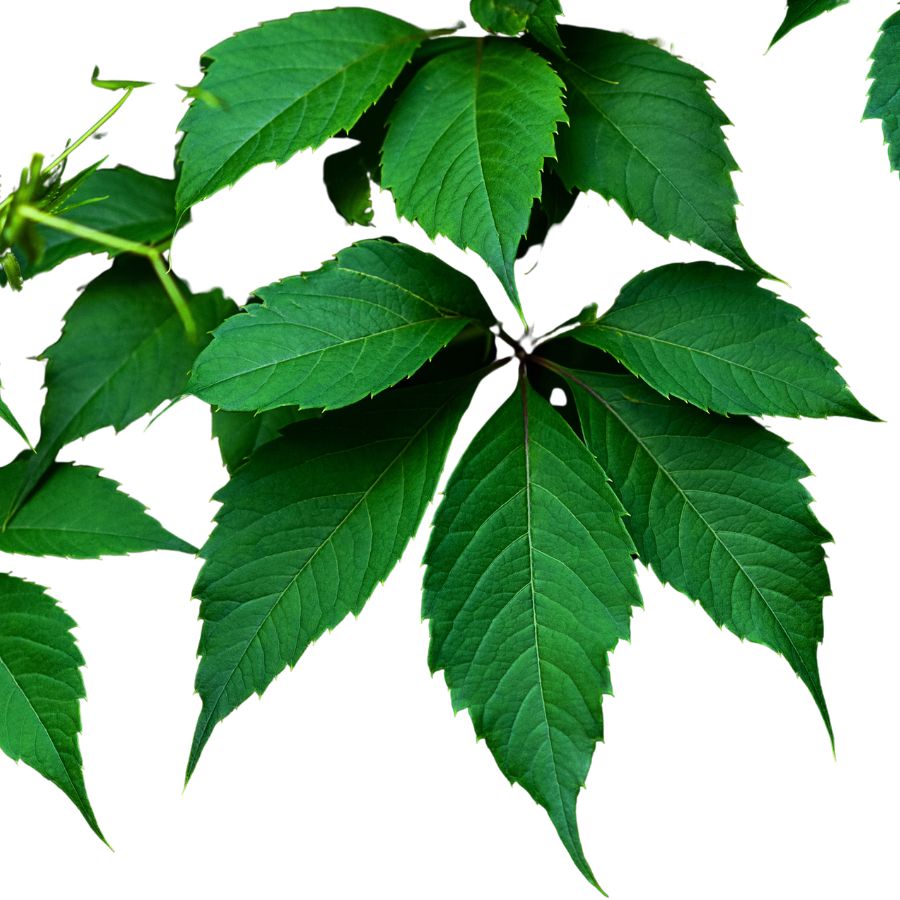
Often mistaken for: Wild grapes (Vitis spp.)
Virginia creeper is a fast-growing vine found on fences, trees, and forest edges. It has five leaflets per stem and produces small, bluish-purple berries from late summer to fall.
It’s often confused with wild grapes since both are climbing vines with similar berries, but grapevines have large, lobed single leaves and tighter fruit clusters. Virginia creeper’s berries are toxic to humans and contain oxalate crystals that can cause nausea, vomiting, and throat irritation.
Castor Bean (Ricinus communis)
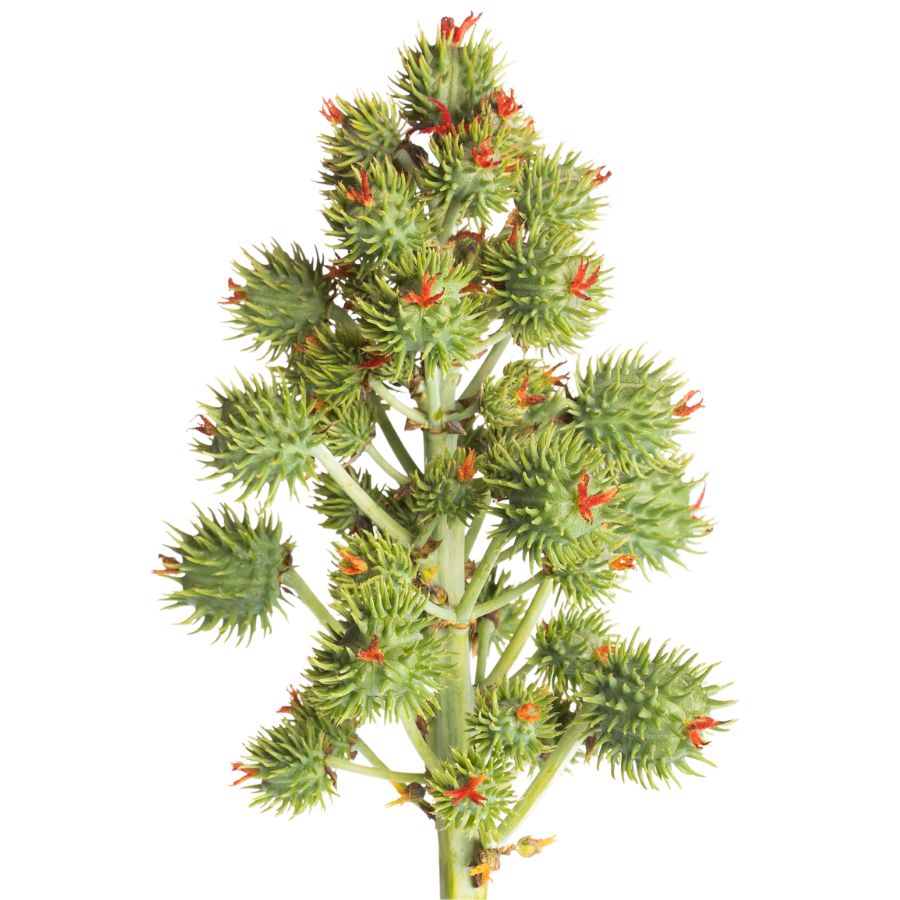
Often mistaken for: Wild rhubarb (Rumex spp. or Rheum spp.)
Castor bean is a bold plant with large, lobed leaves and tall red or green stalks, often found in gardens, along roadsides, and in disturbed areas in warmer regions in the US. Its red-tinged stems and overall size can resemble wild rhubarb to the untrained eye.
Unlike rhubarb, castor bean plants produce spiny seed pods containing glossy, mottled seeds that are extremely toxic. These seeds contain ricin, a deadly compound even in small amounts. While all parts of the plant are toxic, the seeds are especially dangerous and should never be handled or ingested.
A Quick Reminder
Before we get into the specifics about where and how to find these mushrooms, we want to be clear that before ingesting any wild mushroom, it should be identified with 100% certainty as edible by someone qualified and experienced in mushroom identification, such as a professional mycologist or an expert forager. Misidentification of mushrooms can lead to serious illness or death.
All mushrooms have the potential to cause severe adverse reactions in certain individuals, even death. If you are consuming mushrooms, it is crucial to cook them thoroughly and properly and only eat a small portion to test for personal tolerance. Some people may have allergies or sensitivities to specific mushrooms, even if they are considered safe for others.
The information provided in this article is for general informational and educational purposes only. Foraging for wild mushrooms involves inherent risks.
How to Get the Best Results Foraging
Safety should always come first when it comes to foraging. Whether you’re in a rural forest or a suburban greenbelt, knowing how to harvest wild foods properly is a key part of staying safe and respectful in the field.
Always Confirm Plant ID Before You Harvest Anything
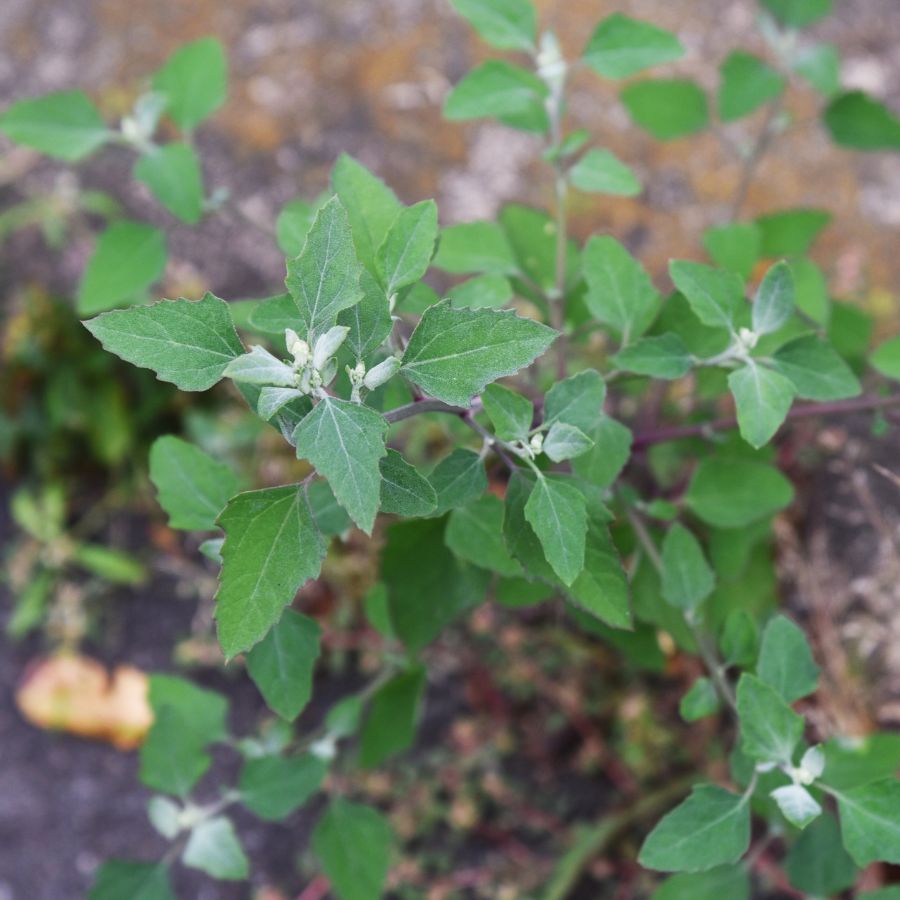
Knowing exactly what you’re picking is the most important part of safe foraging. Some edible plants have nearly identical toxic lookalikes, and a wrong guess can make you seriously sick.
Use more than one reliable source to confirm your ID, like field guides, apps, and trusted websites. Pay close attention to small details. Things like leaf shape, stem texture, and how the flowers or fruits are arranged all matter.
Not All Edible Plants Are Safe to Eat Whole
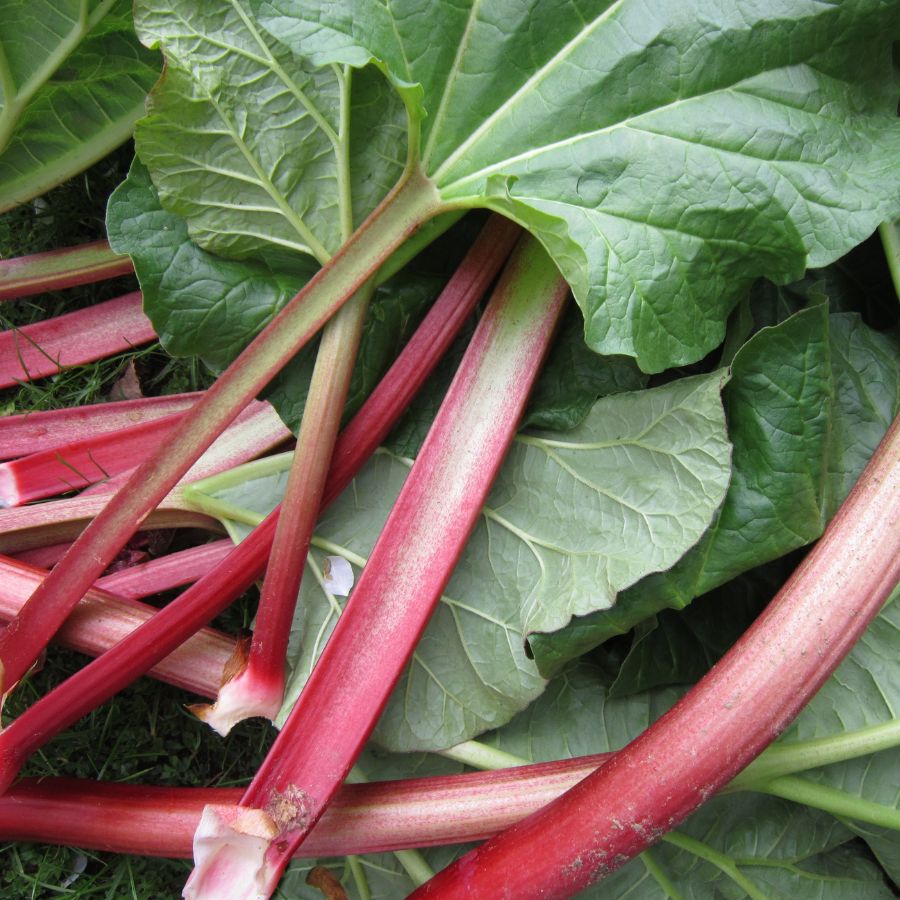
Just because a plant is edible doesn’t mean every part of it is safe. Some plants have leaves, stems, or seeds that can be toxic if eaten raw or prepared the wrong way.
For example, pokeweed is only safe when young and properly cooked, while elderberries need to be heated before eating. Rhubarb stems are fine, but the leaves are poisonous. Always look up which parts are edible and how they should be handled.
Avoid Foraging in Polluted or Contaminated Areas
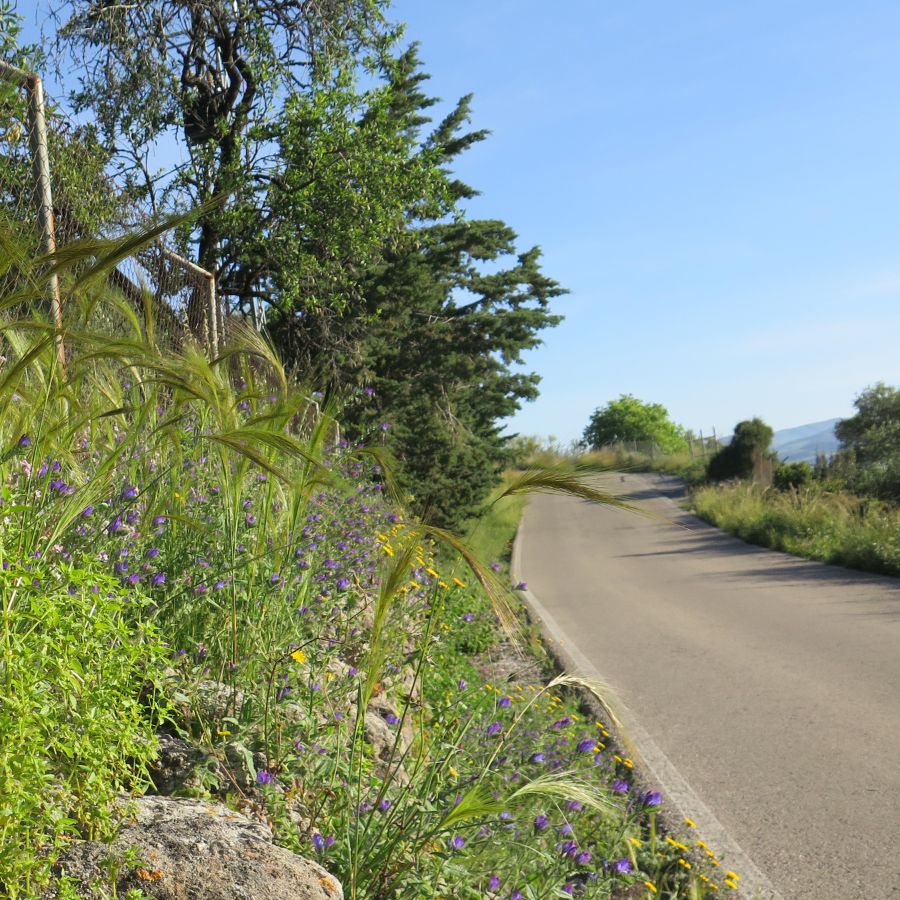
Where you forage matters just as much as what you pick. Plants growing near roads, buildings, or farmland might be coated in chemicals or growing in polluted soil.
Even safe plants can take in harmful substances from the air, water, or ground. Stick to clean, natural areas like forests, local parks that allow foraging, or your own yard when possible.
Don’t Harvest More Than What You Need
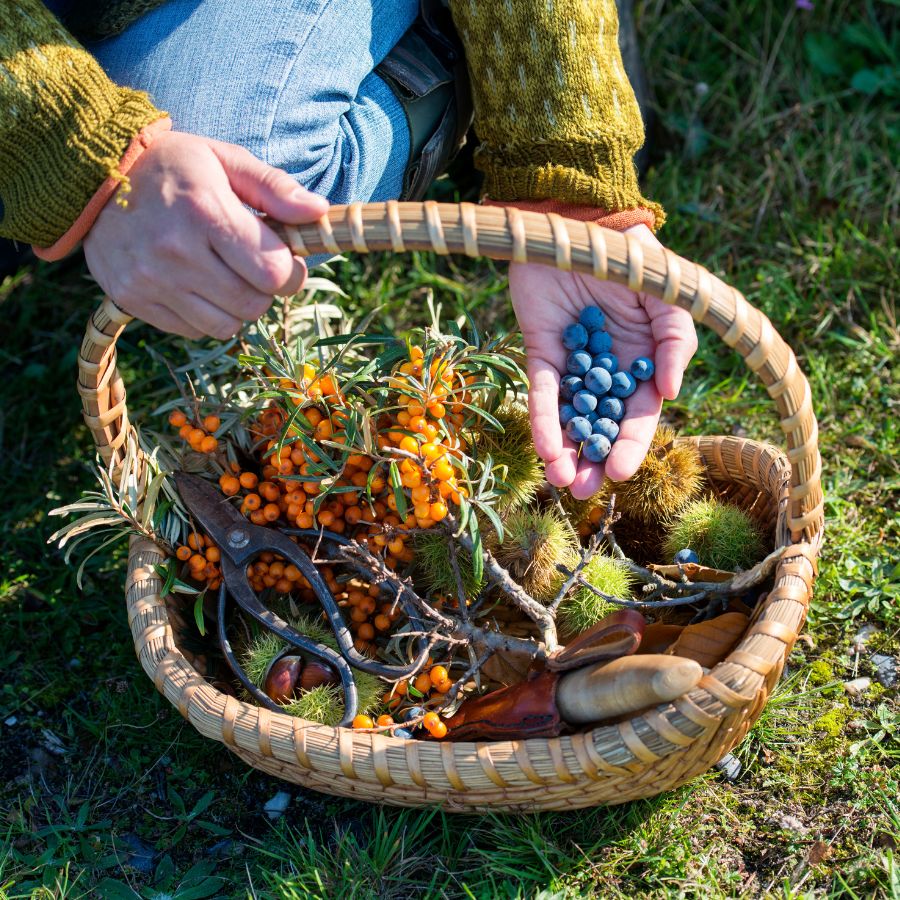
When you forage, take only what you plan to use. Overharvesting can hurt local plant populations and reduce future growth in that area.
Leaving plenty behind helps plants reproduce and supports wildlife that depends on them. It also ensures other foragers have a chance to enjoy the same resources.
Protect Yourself and Your Finds with Proper Foraging Gear

Having the right tools makes foraging easier and safer. Gloves protect your hands from irritants like stinging nettle, and a good knife or scissors lets you harvest cleanly without damaging the plant.
Use a basket or breathable bag to carry what you collect. Plastic bags hold too much moisture and can cause your greens to spoil before you get home.
This forager’s toolkit covers the essentials for any level of experience.
Watch for Allergic Reactions When Trying New Wild Foods

Even if a wild plant is safe to eat, your body might react to it in unexpected ways. It’s best to try a small amount first and wait to see how you feel.
Be extra careful with kids or anyone who has allergies. A plant that’s harmless for one person could cause a reaction in someone else.
Check Local Rules Before Foraging on Any Land
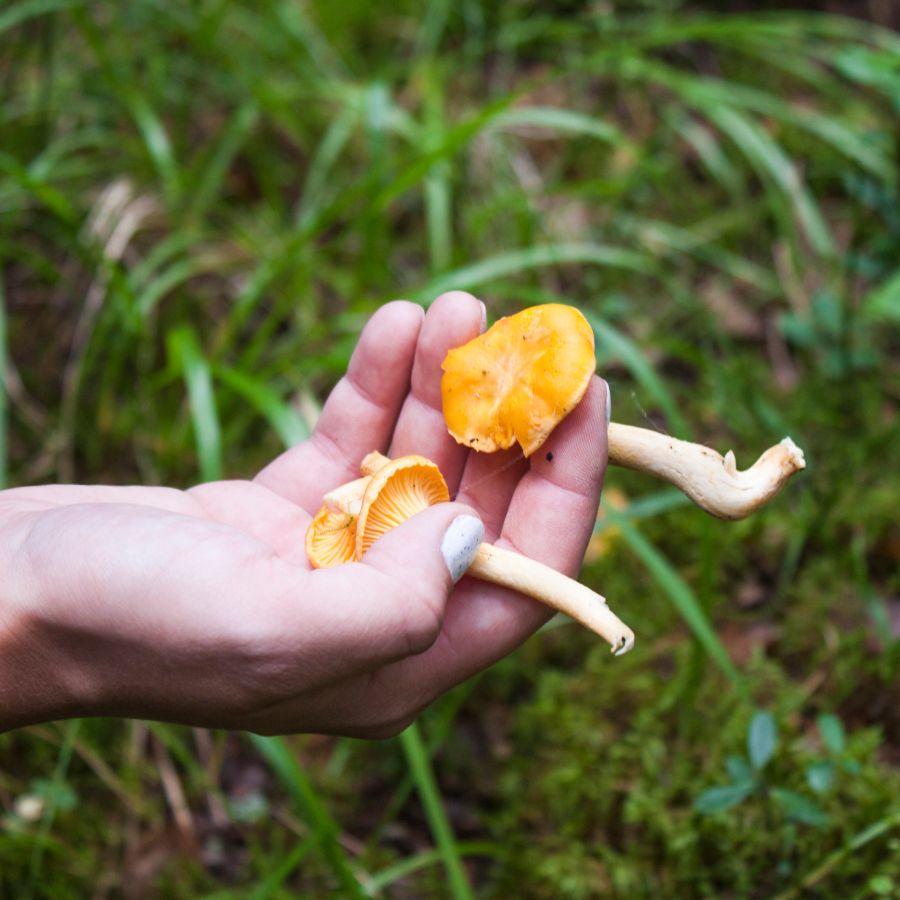
Before you start foraging, make sure you know the rules for the area you’re in. What’s allowed in one spot might be completely off-limits just a few miles away.
Some public lands permit limited foraging, while others, like national parks, usually don’t allow it at all. If you’re on private property, always get permission first.
Before you head out
Before embarking on any foraging activities, it is essential to understand and follow local laws and guidelines. Always confirm that you have permission to access any land and obtain permission from landowners if you are foraging on private property. Trespassing or foraging without permission is illegal and disrespectful.
For public lands, familiarize yourself with the foraging regulations, as some areas may restrict or prohibit the collection of mushrooms or other wild foods. These regulations and laws are frequently changing so always verify them before heading out to hunt. What we have listed below may be out of date and inaccurate as a result.
Where to Find Forageables in the State
There is a range of foraging spots where edible plants grow naturally and often in abundance:
| Plant | Locations |
| Blackberry (Rubus allegheniensis) | – Tombigbee National Forest – Wall Doxey State Park – Clark Creek Natural Area |
| Elderberry (Sambucus nigra subsp. canadensis) | – De Soto National Forest – Tishomingo State Park – Noxubee National Wildlife Refuge |
| American Persimmon (Diospyros virginiana) | – Homochitto National Forest – Roosevelt State Park – Natchez State Park |
| Muscadine (Vitis rotundifolia) | – Bienville National Forest – Paul B. Johnson State Park – Percy Quin State Park |
| Passionflower (Passiflora incarnata) | – Lefleur’s Bluff State Park – Chickasaw Wildlife Management Area – Trace State Park |
| Zarzaparrilla (Smilax bona-nox) | – Delta National Forest – Golden Memorial State Park – Chewalla Lake Recreation Area |
| Dewberry (Rubus trivialis) | – Sardis Waterfowl Management Area – Hugh White State Park – John W. Starr Memorial Forest |
| American Beautyberry (Callicarpa americana) | – Clarkco State Park – Grenada Lake Public Lands – Jeff Busby Campground (Natchez Trace Parkway) |
| Lamb’s Quarters (Chenopodium album) | – Tippah County Lake Recreation Area – George P. Cossar State Park – Grenada Wildlife Management Area |
| Groundnut (Apios americana) | – Pascagoula River Wildlife Management Area – Yazoo National Wildlife Refuge – Chickasawhay Ranger District (De Soto NF) |
| Jerusalem Artichoke (Helianthus tuberosus) | – Twin Oaks Recreation Area (Delta NF) – Holmes County State Park – Bluff Lake Boardwalk (Noxubee NWR) |
| Chickweed (Stellaria media) | – Lake Lowndes State Park – Clark Creek Natural Area – Choctaw Lake Recreation Area |
| Wood Sorrel (Oxalis stricta) | – Little Mountain Trail (Tishomingo SP) – Indian Bayou Wildlife Management Area – Dunn’s Falls Park |
| Daylily (Hemerocallis fulva) | – Trace State Park – Natchez Trace Parkway Scenic Overlooks – Lake Lincoln State Park |
| Dandelion (Taraxacum officinale) | – Tombigbee River Valley Unit – Legion State Park – Bayou Pierre Wildlife Management Area |
| Plantain (Plantago major) | – Shepard State Park – Bogue Chitto National Wildlife Refuge – Chicasaw County Lake Area |
| Meadow Garlic (Allium canadense) | – Upper Sardis Wildlife Management Area – Okatibbee Wildlife Management Area – Holmes County State Park |
| Eastern Prickly Pear Cactus (Opuntia humifusa) | – Red Bluff (Columbia area) – Little Mountain area (Jeff Busby) – Tishomingo State Park Rock Outcrops |
| Black Walnut (Juglans nigra) | – Tombigbee National Forest – Bienville National Forest – Golden Memorial State Park |
| Hickory (Carya ovata) | – Homochitto National Forest – Jeff Busby Campground – Lake Claude Bennett Recreation Area |
| Pecan (Carya illinoinensis) | – Leroy Percy State Park – Bluff Lake (Noxubee NWR) – Yazoo River Wildlife Management Area |
| White Oak (Quercus alba) | – Choctaw Lake Recreation Area – Tombigbee National Forest – Red Creek Wildlife Management Area |
| Red Oak (Quercus rubra) | – Jeff Busby Campground (Natchez Trace Parkway) – Okhissa Lake Area (Homochitto NF) – Bogue Chitto National Wildlife Refuge |
| Chinquapin (Castanea pumila) | – Little Mountain Trail (Tishomingo State Park) – Bienville National Forest – Clarkco State Park |
| Hazelnut (Corylus americana) | – Trace Unit (Noxubee NWR) – Black Creek Trail (De Soto NF) – Holly Springs National Forest |
| Pawpaw (Asimina triloba) | – Davis Lake Recreation Area – Jeff Davis Lake Recreation Area – Percy Quin State Park |
| Sassafras (Sassafras albidum) | – Delta National Forest – Chewalla Lake Recreation Area – Roosevelt State Park |
| Spicebush (Lindera benzoin) | – Clark Creek Natural Area – Tishomingo State Park – Sky Lake Wildlife Management Area |
| Wild Plum (Prunus americana) | – Hugh White State Park – Grenada Lake Public Lands – Great River Road State Park |
| Wild Cherry (Prunus serotina) | – Indian Bayou Wildlife Management Area – George P. Cossar State Park – Natchez Trace Parkway Trails |
| Watercress (Nasturtium officinale) | – Clark Creek Spring Area – Bear Creek Outcroppings (Tishomingo SP) – Chunky River Recreation Area |
| Henbit (Lamium amplexicaule) | – Lake Lowndes State Park – Lefleur’s Bluff State Park – Legion State Park |
| Wild Bergamot (Monarda fistulosa) | – Natchez Trace Parkway Meadow Zones – Tippah County Lake Area – Dunn’s Falls Park |
| Mulberry (Morus rubra) | – Chickasaw Wildlife Management Area – Wall Doxey State Park – Nitta Yuma Public Lands |
| Sumac (Rhus glabra) | – Golden Memorial State Park – Red Bluff Overlook Area – Choctaw Wildlife Management Area |
| Cattail (Typha latifolia) | – Sky Lake Boardwalk – Pascagoula River Audubon Center Wetlands – Bluff Lake Spillway (Noxubee NWR) |
| Amaranth (Amaranthus retroflexus) | – Grenada Wildlife Management Area – Bear Creek Public Lands – Chickasawhay Ranger District (De Soto NF) |
| Wild Mustard (Sinapis arvensis) | – Sardis Waterfowl Management Area – Holmes County State Park – Tuscumbia Wildlife Management Area |
| Ground Cherry (Physalis virginiana) | – Natchez State Park – Upper Sardis Wildlife Management Area – Trace State Park Prairie Zones |
Peak Foraging Seasons
Different edible plants grow at different times of year, depending on the season and weather. Timing your search makes all the difference.
Spring
Spring brings a fresh wave of wild edible plants as the ground thaws and new growth begins:
| Plant | Months | Best Weather Conditions |
| Chickweed (Stellaria media) | February – April | Cool, moist conditions; after light rain |
| Henbit (Lamium amplexicaule) | February – April | Cool, moist meadows or disturbed ground |
| Wood Sorrel (Oxalis stricta) | March – May | Mild temperatures; partial shade after rain |
| Dandelion (Taraxacum officinale) | March – May | Cool to warm, lightly moist soil |
| Plantain (Plantago major) | March – May | Moist ground, especially after rain |
| Meadow Garlic (Allium canadense) | March – May | Cool mornings, soft wet soil |
| Dewberry (Rubus trivialis) | March – May | Early spring warmth, partial sun |
| Zarzaparrilla (Smilax bona-nox) | March – May | Warm and humid, following rain |
| Sassafras (Sassafras albidum) | March – May | Cool mornings, damp leaf litter, light rain |
| Spicebush (Lindera benzoin) | March – May | Moist woodland soil, dappled sun after showers |
| Wild Plum (Prunus americana) | March – May | Sunny with scattered rain, mild temperatures |
| Watercress (Nasturtium officinale) | March – May | Clear flowing streams; cool, sunny days |
| Wild Mustard (Sinapis arvensis) | March – May | Sunny days with light soil moisture |
| Lamb’s Quarters (Chenopodium album) | April – May | Warm, damp soil; sunny breaks after rain |
| Passionflower (Passiflora incarnata) | April – May | Sunny with scattered showers; warm days |
| Pawpaw (Asimina triloba) | April – May | Mild temps, moist forest edges, post-rain |
| White Oak (Quercus alba) | April – May (early greens) | Damp understory, soft sunlight, cool air |
| Ground Cherry (Physalis virginiana) | May | Warm and slightly moist, partial sun |
Summer
Summer is a peak season for foraging, with fruits, flowers, and greens growing in full force:
| Plant | Months | Best Weather Conditions |
| Blackberry (Rubus allegheniensis) | May – July | Warm to hot, dry intervals between rains |
| Daylily (Hemerocallis fulva) | May – July | Sunny and warm with recent rainfall |
| Meadow Garlic (Allium canadense) | May – June | Dry, sunny conditions; sandy or loamy soil |
| Mulberry (Morus rubra) | May – July | Warm, humid air; sunny canopy edges |
| Elderberry (Sambucus nigra subsp. canadensis) | June – August | Hot, sunny days with periodic rain |
| American Beautyberry (Callicarpa americana) | June – August | Humid, partial shade, post-rain periods |
| Groundnut (Apios americana) | June – August | Moist, warm creekside or riverside areas |
| Plantain (Plantago major) | June – August | Moist soil in shady spots after showers |
| Wild Sorrel (Oxalis stricta) | June – August | Warm mornings; dappled light and recent rain |
| Eastern Prickly Pear Cactus (Opuntia humifusa) | June – August | Hot, dry weather; avoid wet periods |
| Wild Cherry (Prunus serotina) | June – August | Hot afternoons, scattered showers |
| Wild Bergamot (Monarda fistulosa) | June – August | Hot, dry days with well-drained soils |
| Cattail (Typha latifolia) | June – August | Hot, shallow wetlands or marsh edges |
| Amaranth (Amaranthus retroflexus) | June – August | Dry, sunny conditions in disturbed soils |
| Ground Cherry (Physalis virginiana) | June – August | Warm, semi-shaded ground after light rain |
| Sassafras (Sassafras albidum) | June – August (young leaves) | Humid mornings with partial shade |
| Muscadine (Vitis rotundifolia) | July – September | Hot, humid days; consistent summer sun |
| Sumac (Rhus glabra) | July – August | Warm, dry slopes or roadsides |
Fall
As temperatures drop, many edible plants shift underground or produce their last harvests:
| Plant | Months | Best Weather Conditions |
| Wild Plum (Prunus americana) | September | Late summer warmth tapering to cool evenings |
| Groundnut (Apios americana) | September – October | Cool, damp ground in riparian zones |
| Lamb’s Quarters (Chenopodium album) | September – October | Mild temps and soft, recently wet soil |
| Passionflower (Passiflora incarnata) | September – October | Sunny and warm, late-season fruits |
| Daylily (Hemerocallis fulva) | September – October | Warm and dry stretches; post-summer bloom |
| Chinquapin (Castanea pumila) | September – October | Sunny with cool nights, dry leaf litter |
| Hazelnut (Corylus americana) | September – October | Breezy days, dry underbrush |
| Pawpaw (Asimina triloba) | September – October | Mild and humid early fall days |
| Spicebush (Lindera benzoin) | September – October (berries) | Cool and moist woodland air |
| Sumac (Rhus glabra) | September – October | Dry and sunny with cool nights |
| American Persimmon (Diospyros virginiana) | September – November | Cool nights, dry days after frost |
| Hickory (Carya ovata) | September – November | Crisp, dry days with light breeze |
| Black Walnut (Juglans nigra) | September – November | Clear fall days after early frosts |
| Dandelion (Taraxacum officinale) | September – November | Moist soil, mild afternoons after rain |
| Pecan (Carya illinoinensis) | September – November | Dry, crisp days with light wind |
| White Oak (Quercus alba) | September – November (acorns) | Cool, dry weather following early frosts |
| Jerusalem Artichoke (Helianthus tuberosus) | October – November | Cool and dry, often post-frost dig time |
| Red Oak (Quercus rubra) | October – November | Clear skies and dry ground |
Winter
Winter foraging is limited but still possible, with hardy plants and preserved growth holding on through the cold:
| Plant | Months | Best Weather Conditions |
| Chickweed (Stellaria media) | December – February | Mild winter days after light rain |
| Dandelion (Taraxacum officinale) | December – February | Sunny winter patches with moist ground |
| Wood Sorrel (Oxalis stricta) | December – February | Cool shade, especially after showers |
| Henbit (Lamium amplexicaule) | December – February | Cool, moist soil with filtered sun |
| Watercress (Nasturtium officinale) | December – February | Flowing cold streams, mild sunny days |
| Plantain (Plantago major) | January – February | Damp, cool conditions with filtered light |
| Zarzaparrilla (Smilax bona-nox) | January – February | Moist wooded areas with minimal freeze |
| Sassafras (Sassafras albidum) | January – February (roots) | Cold, damp forest ground after rain |
| Wild Mustard (Sinapis arvensis) | January – February | Clear, cool days with soft ground |
| Cattail (Typha latifolia) | January – February (roots) | Frozen or thawing wetland edges, low wind |
| Spicebush (Lindera benzoin) | January – February (twigs) | Moist air and cold mornings in forest shade |
| Meadow Garlic (Allium canadense) | February | Cold ground beginning to thaw slightly |
One Final Disclaimer
The information provided in this article is for general informational and educational purposes only. Foraging for wild plants and mushrooms involves inherent risks. Some wild plants and mushrooms are toxic and can be easily mistaken for edible varieties.
Before ingesting anything, it should be identified with 100% certainty as edible by someone qualified and experienced in mushroom and plant identification, such as a professional mycologist or an expert forager. Misidentification can lead to serious illness or death.
All mushrooms and plants have the potential to cause severe adverse reactions in certain individuals, even death. If you are consuming foraged items, it is crucial to cook them thoroughly and properly and only eat a small portion to test for personal tolerance. Some people may have allergies or sensitivities to specific mushrooms and plants, even if they are considered safe for others.
Foraged items should always be fully cooked with proper instructions to ensure they are safe to eat. Many wild mushrooms and plants contain toxins and compounds that can be harmful if ingested.

